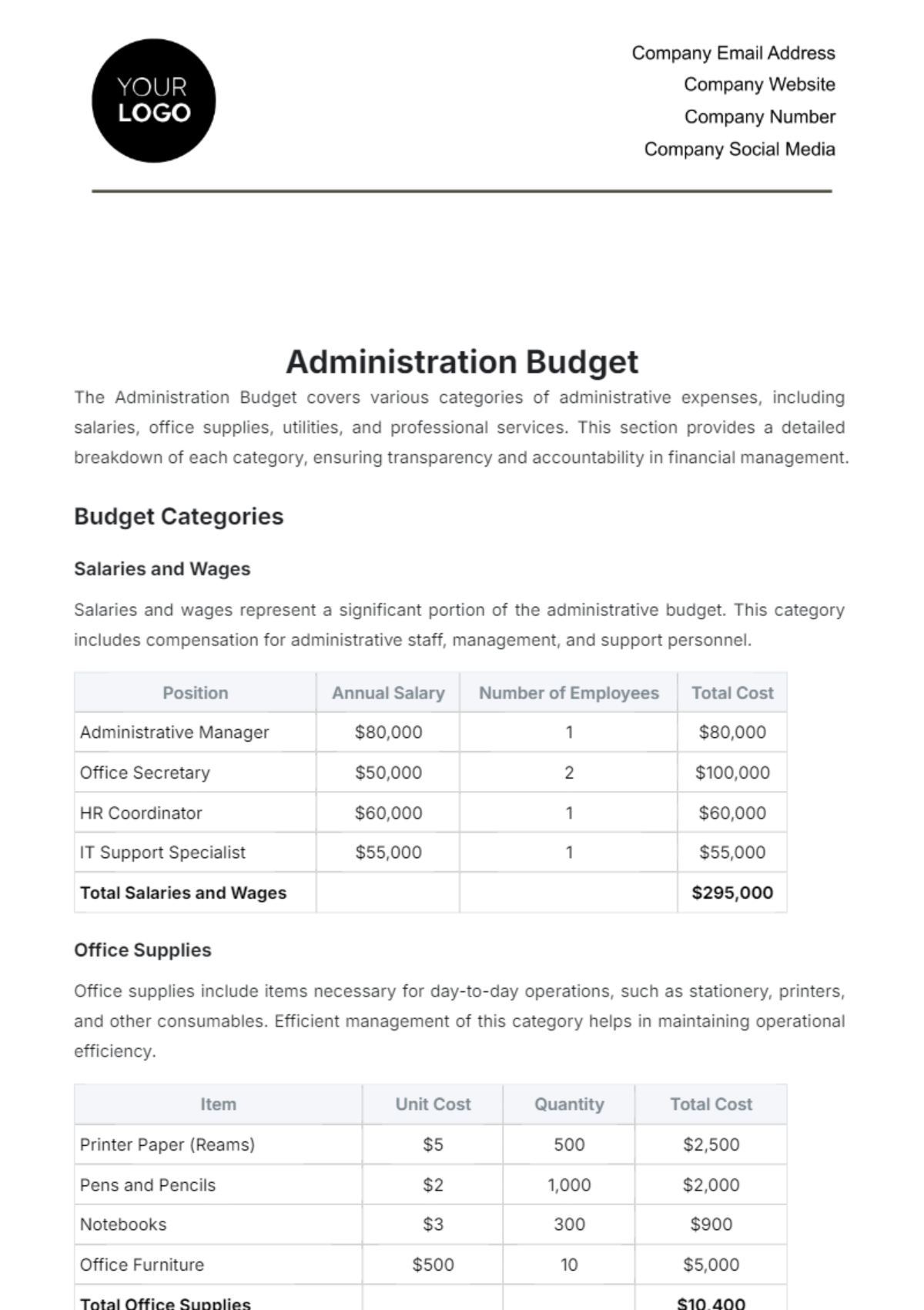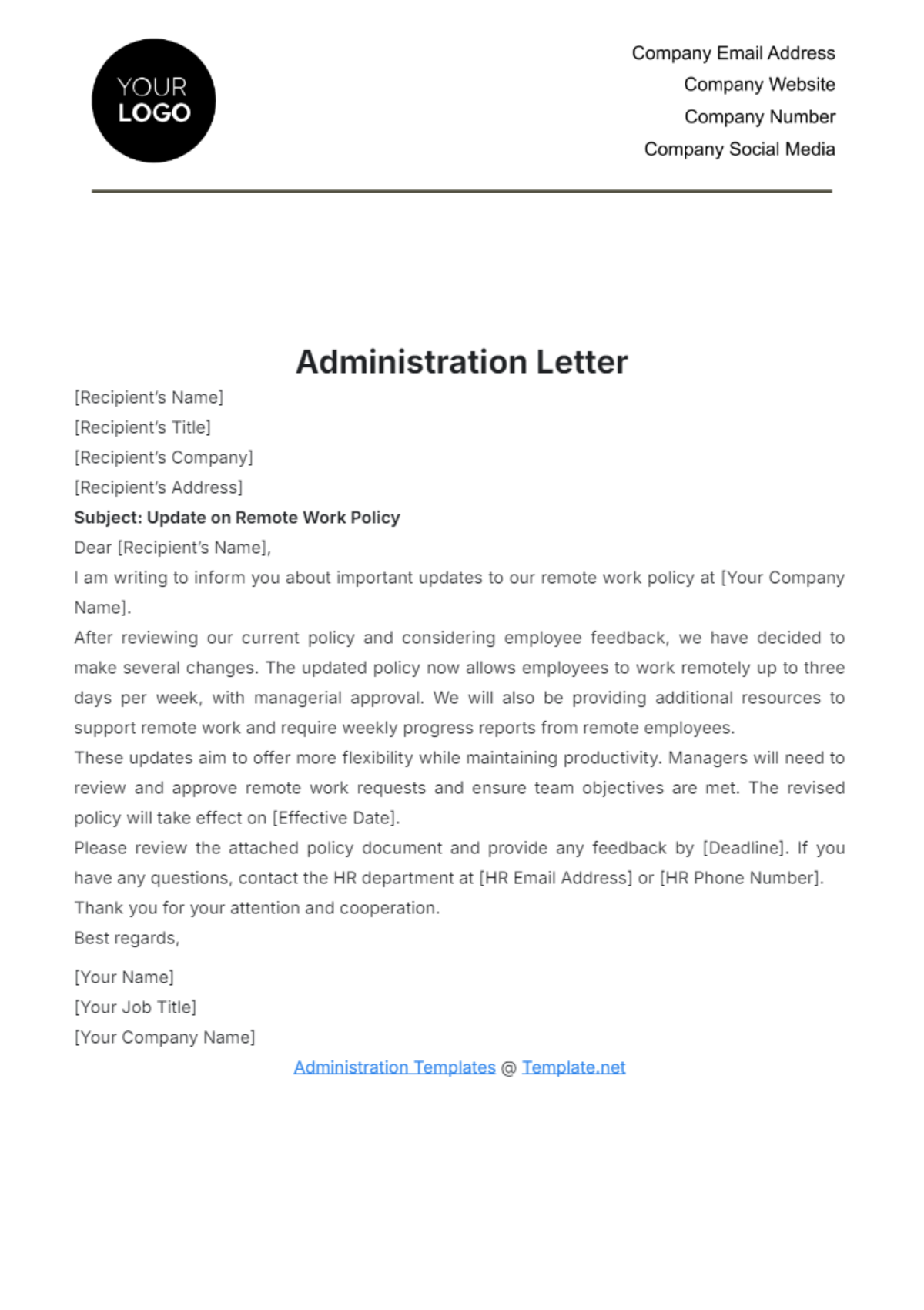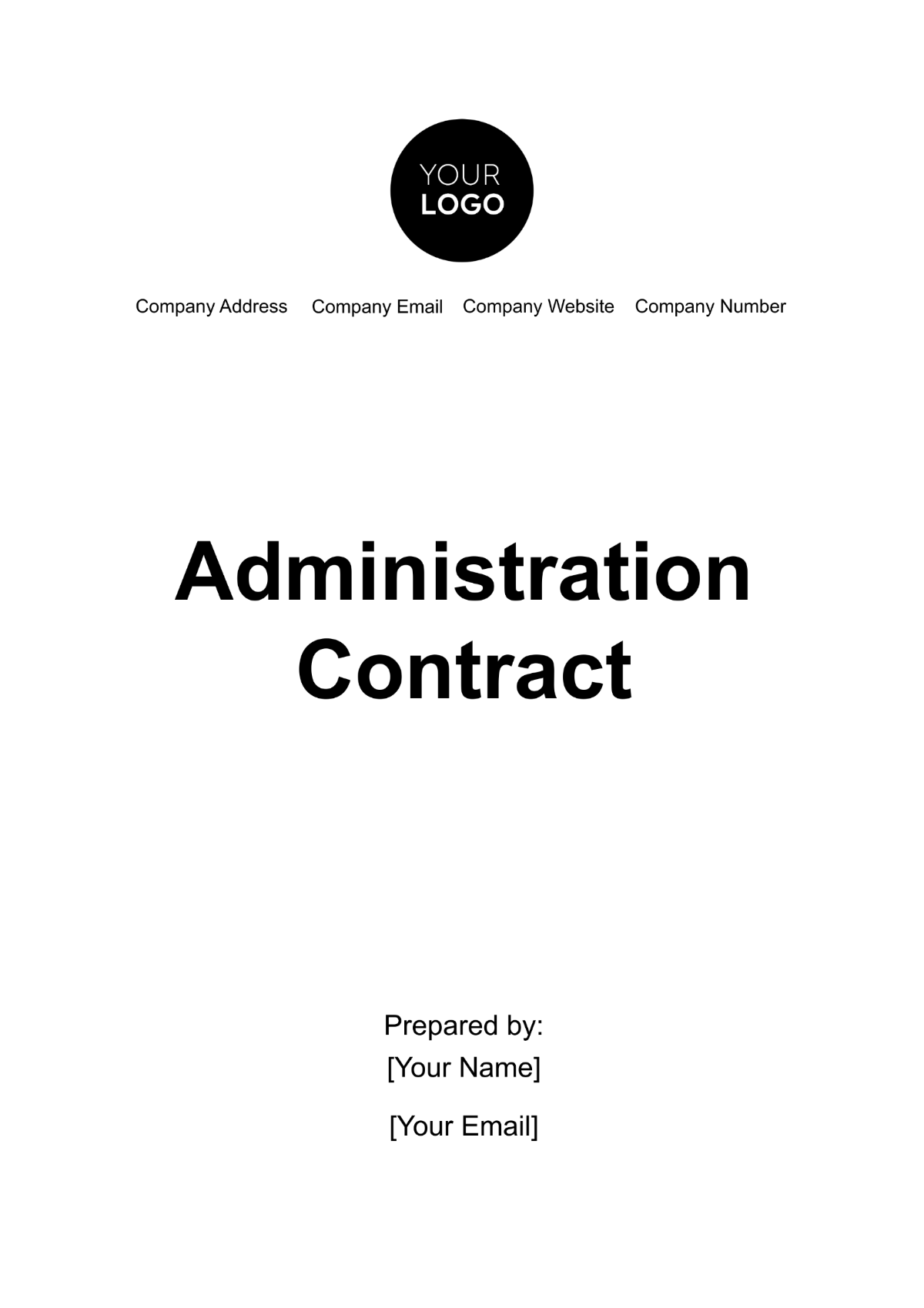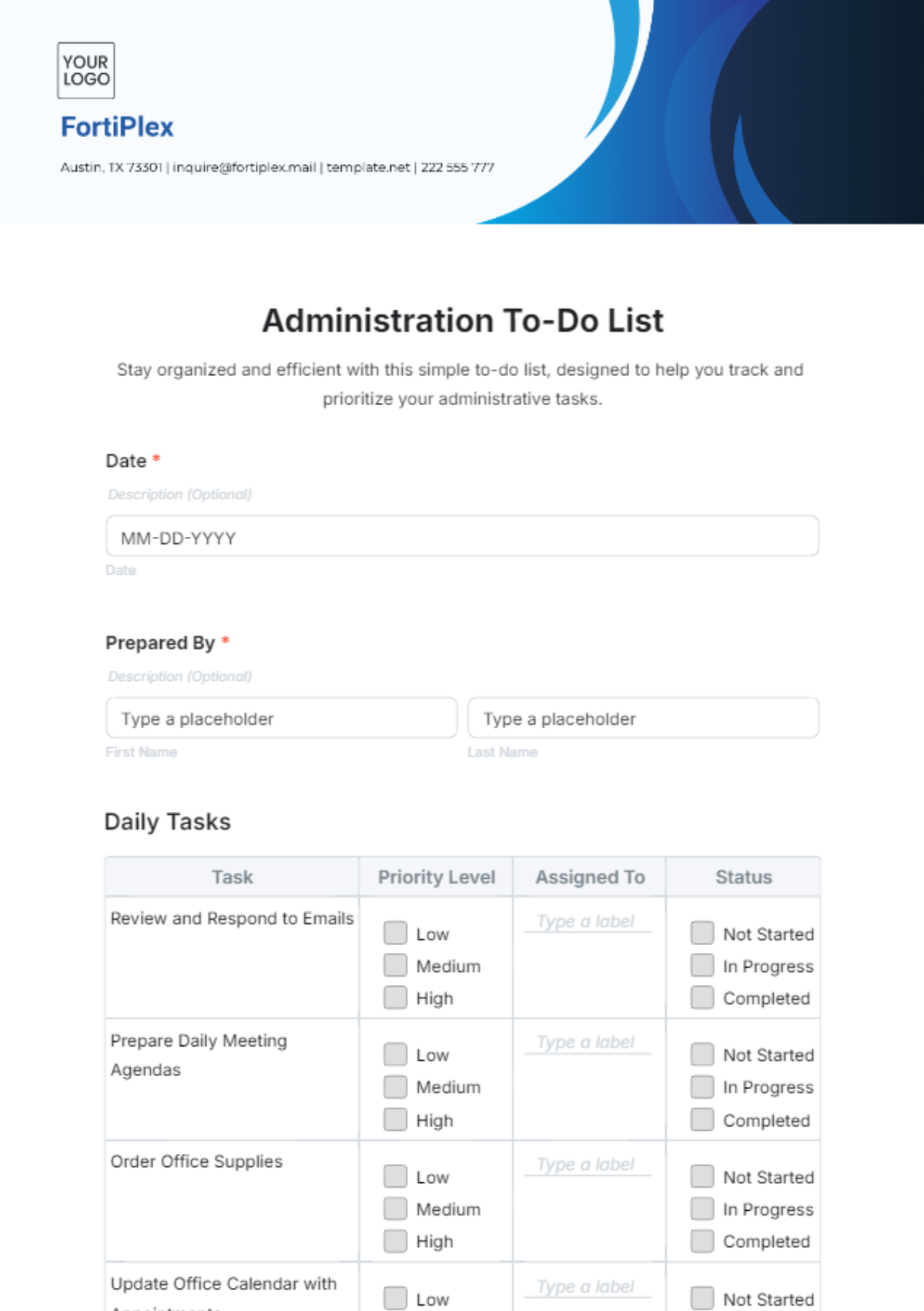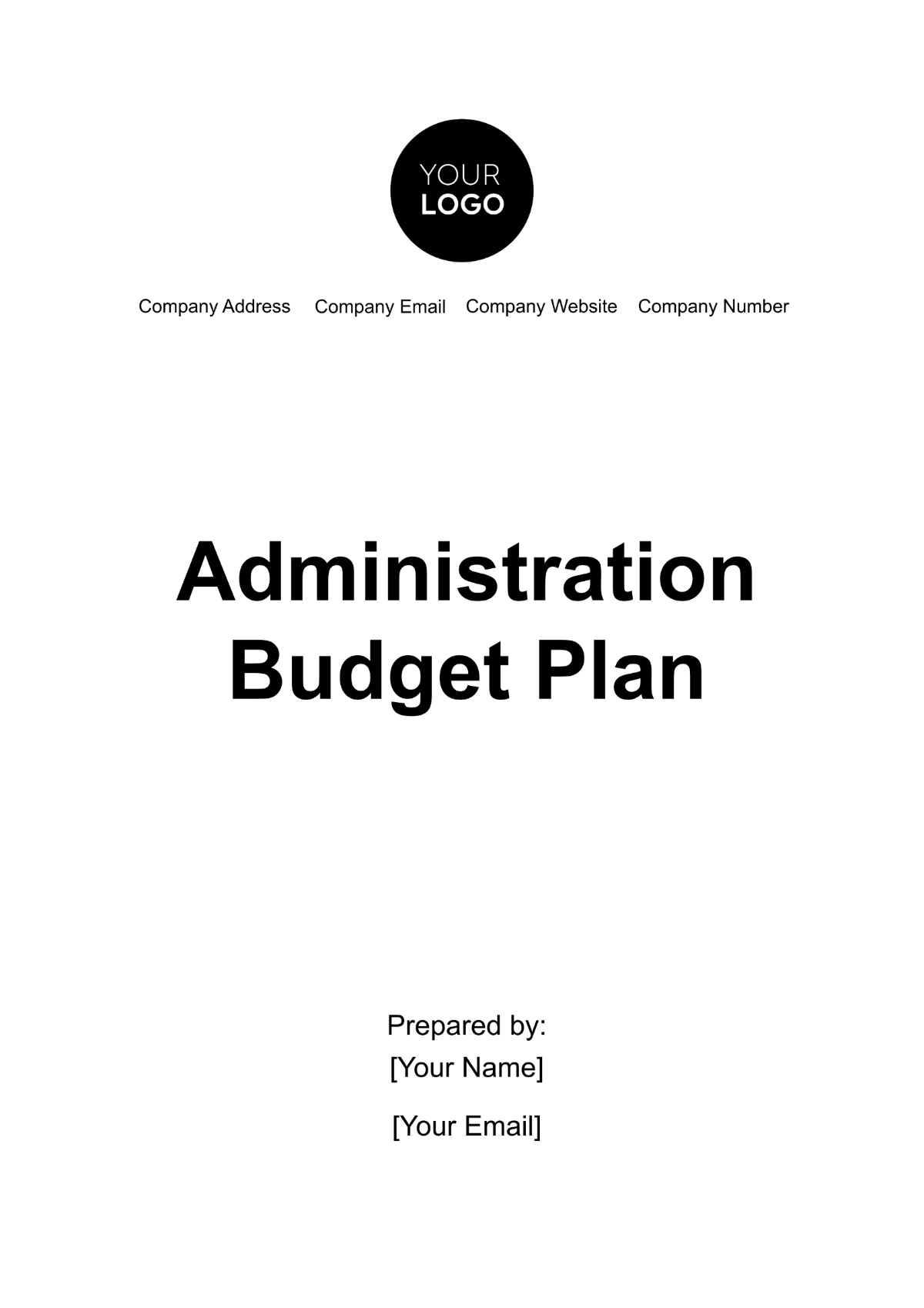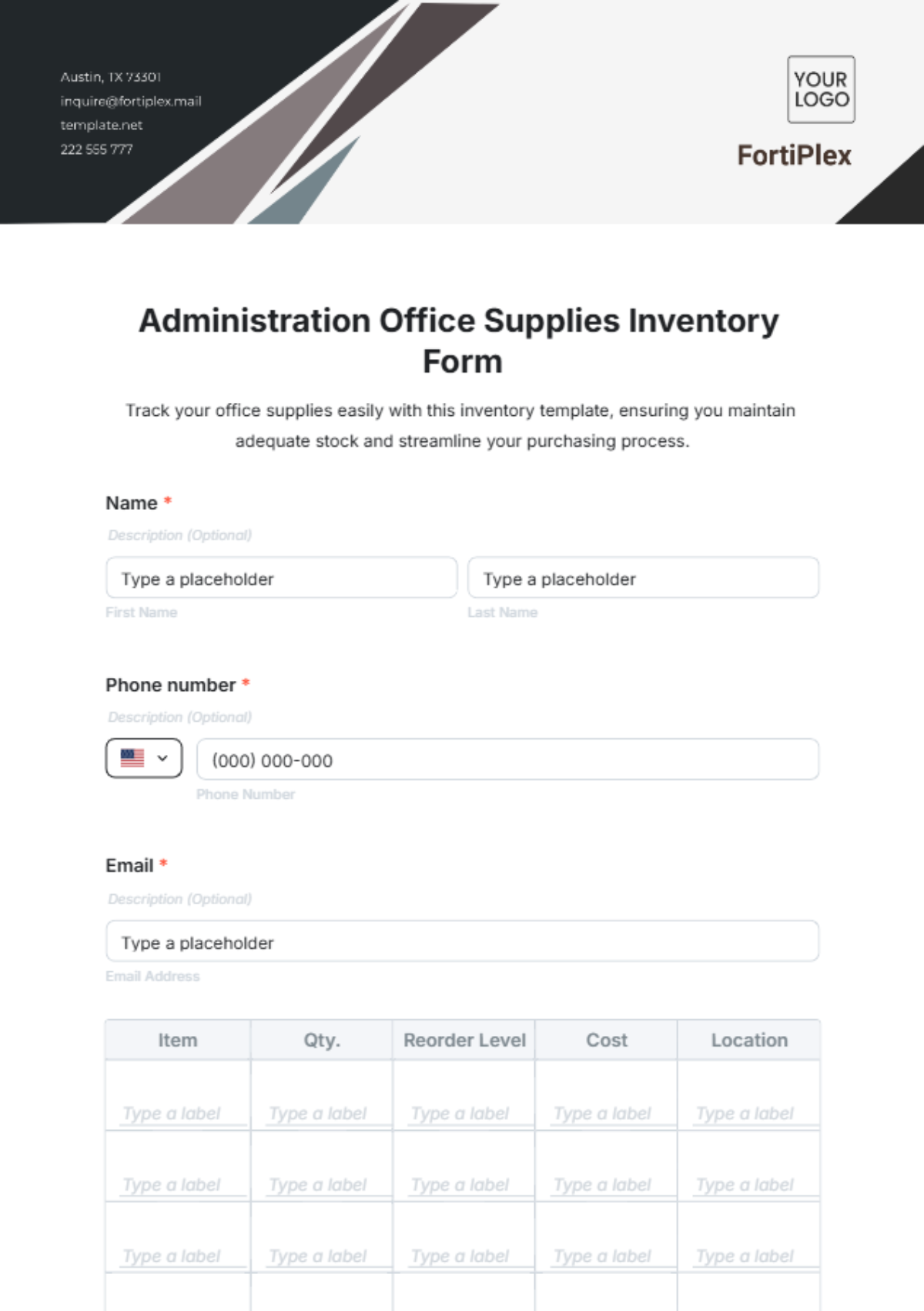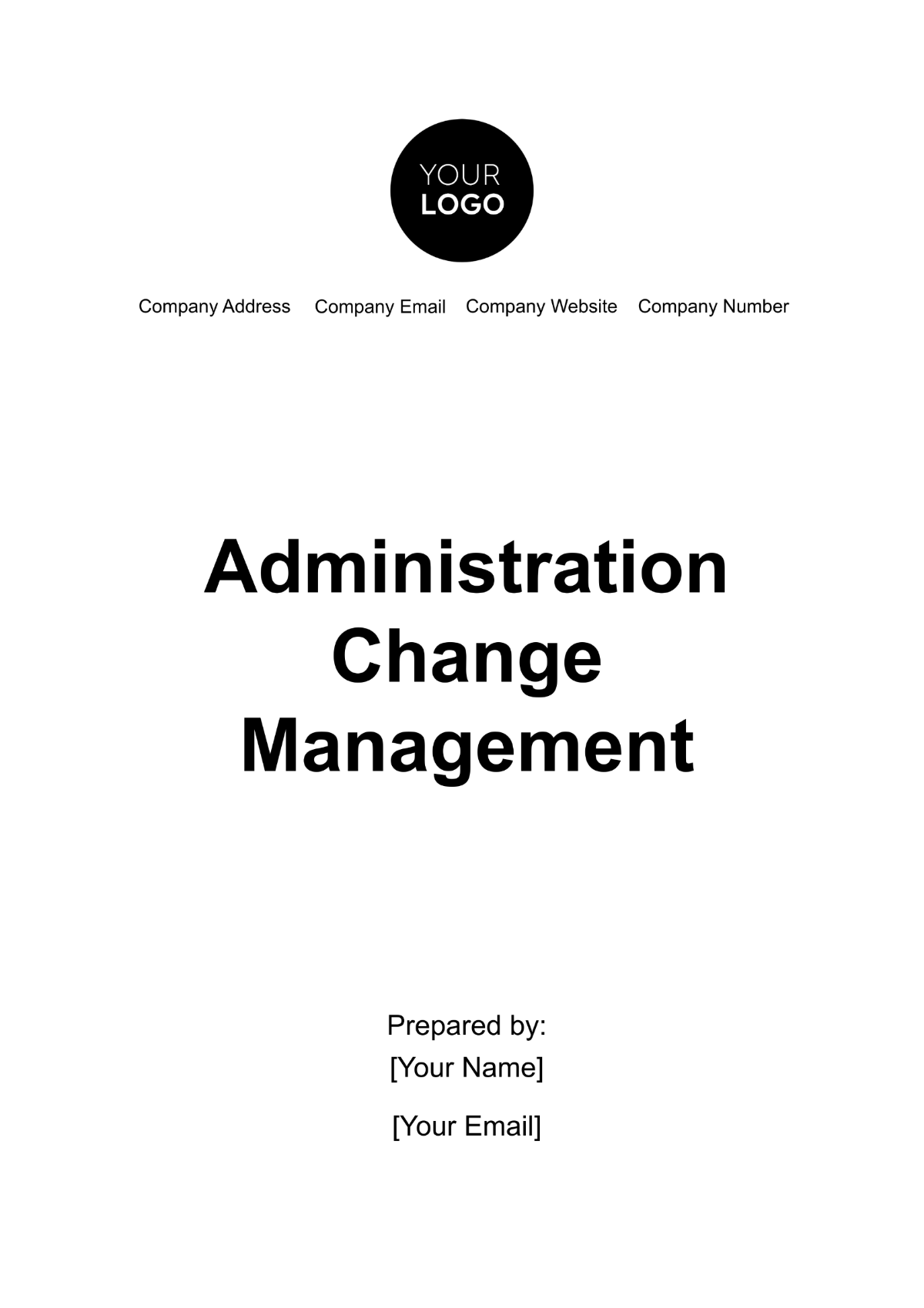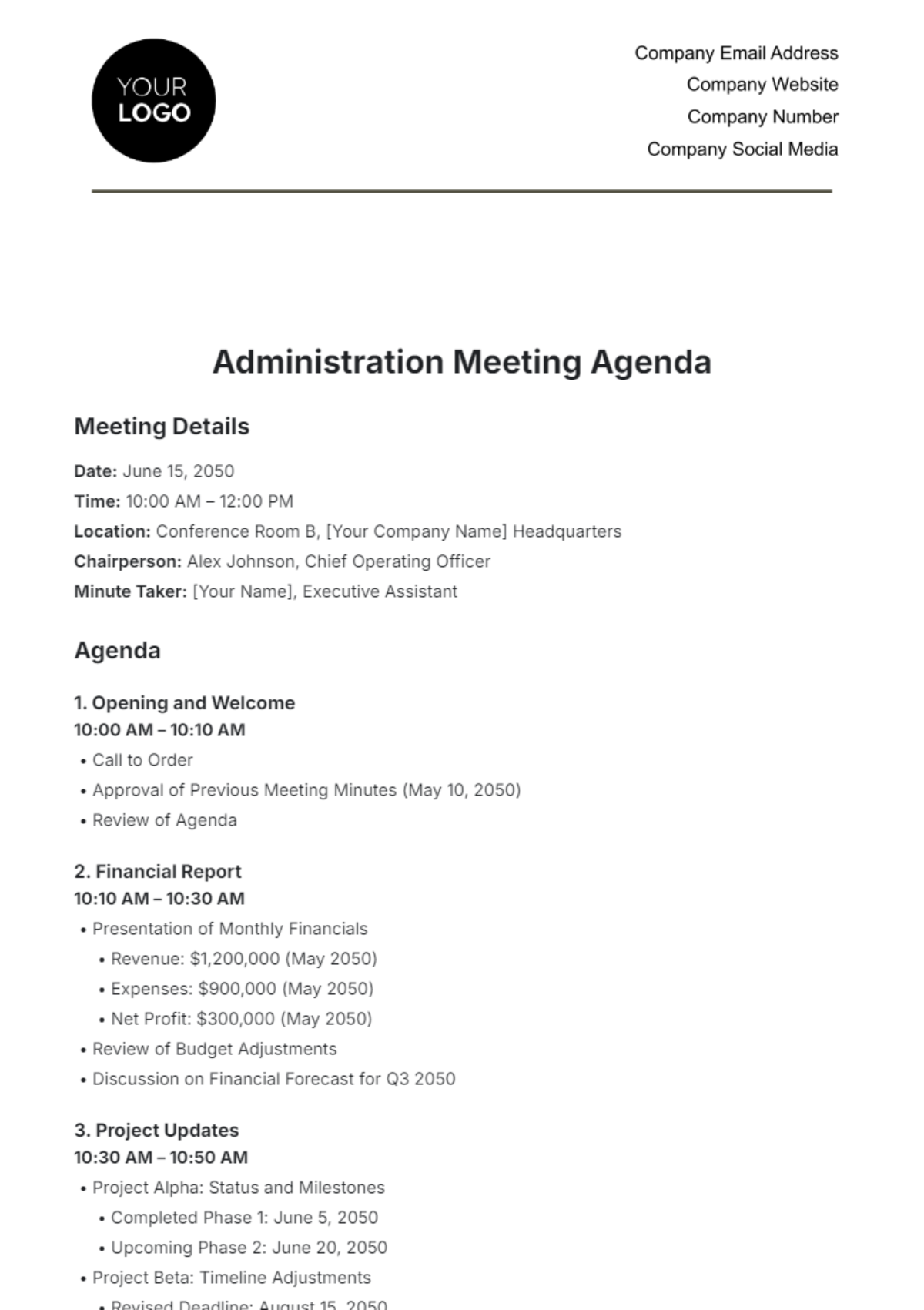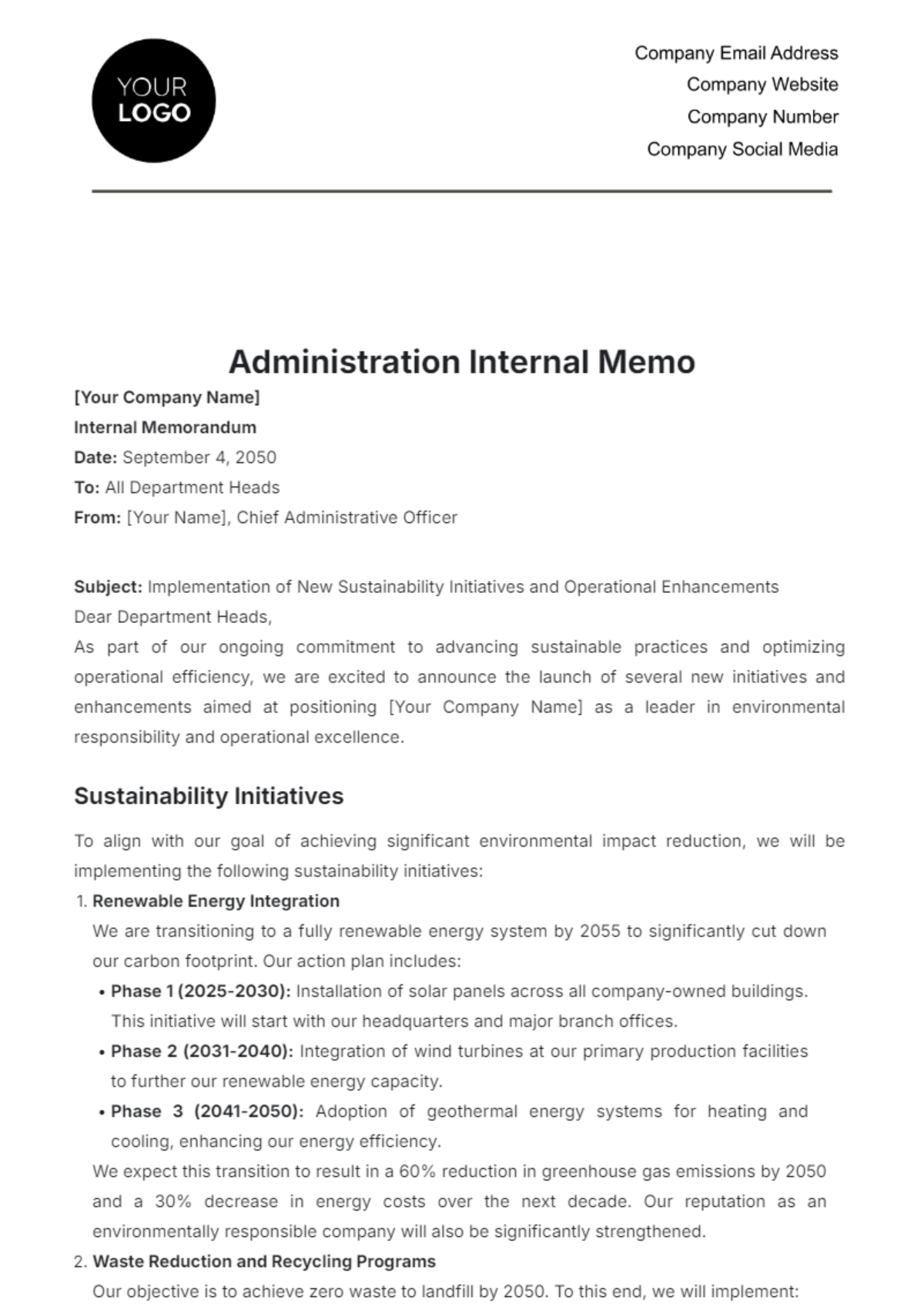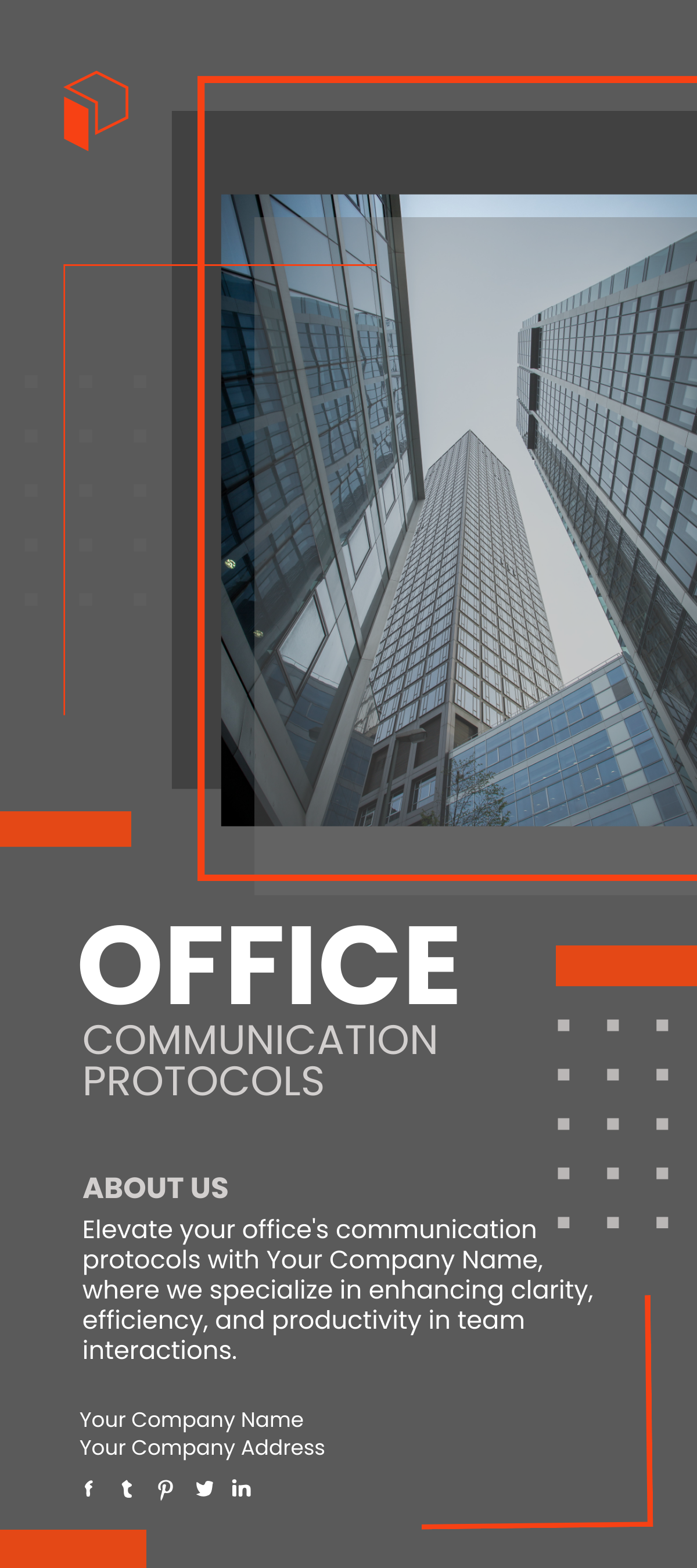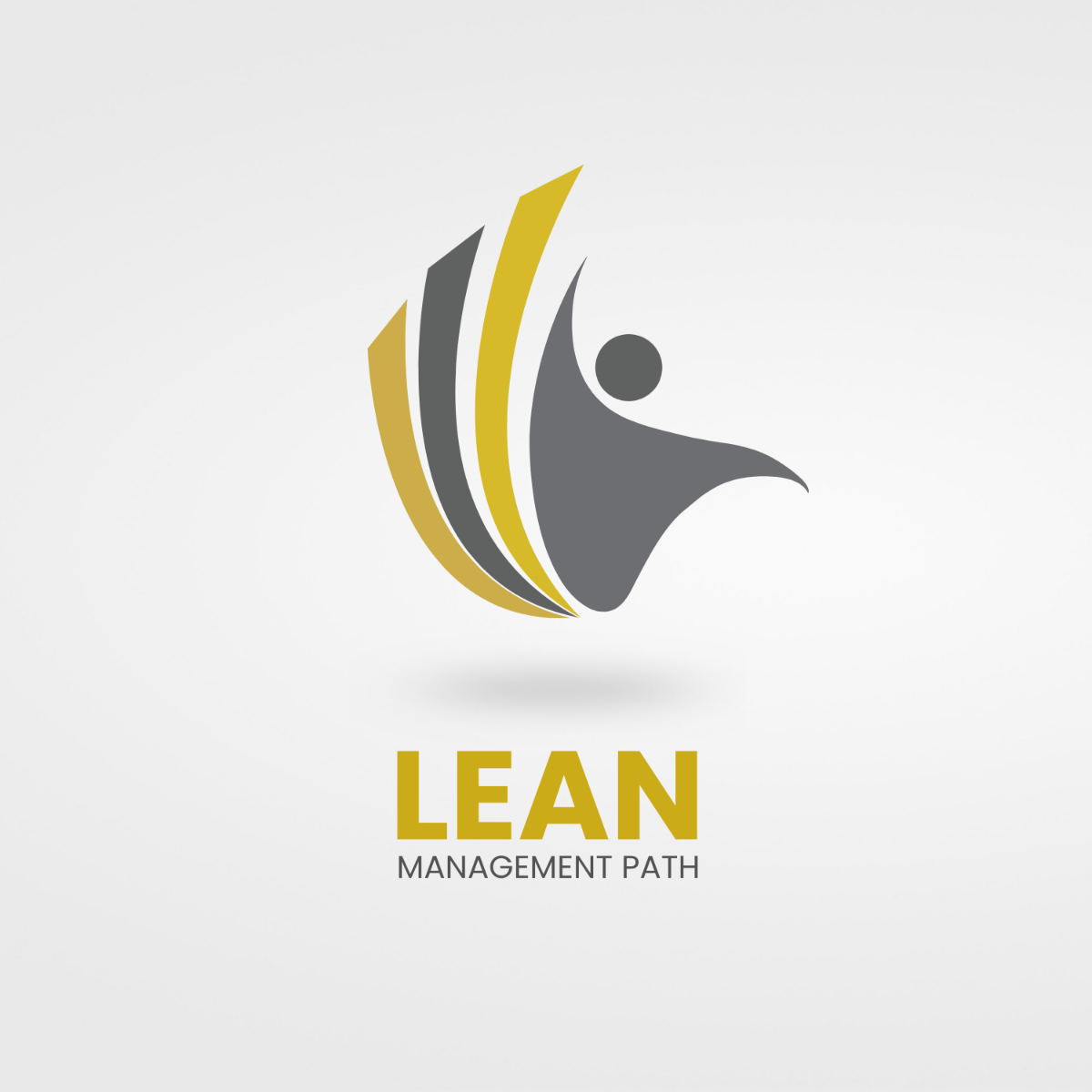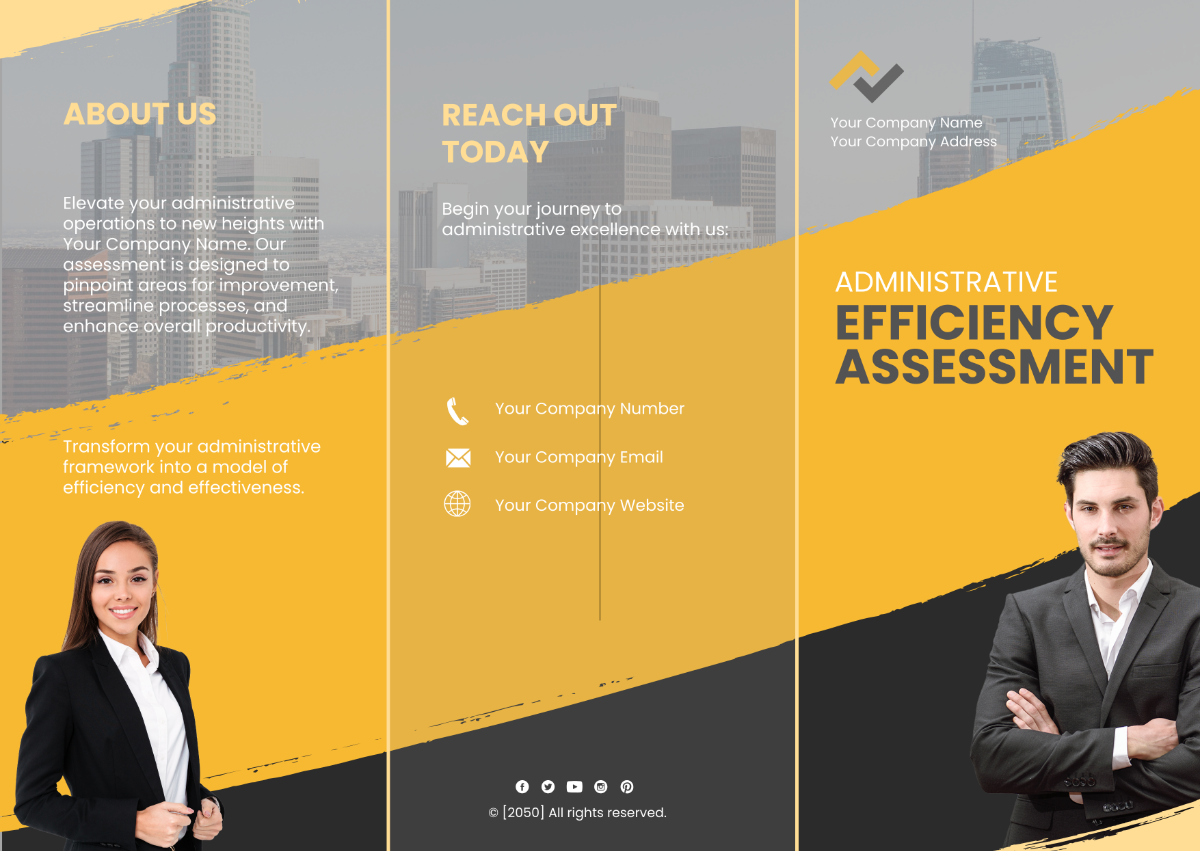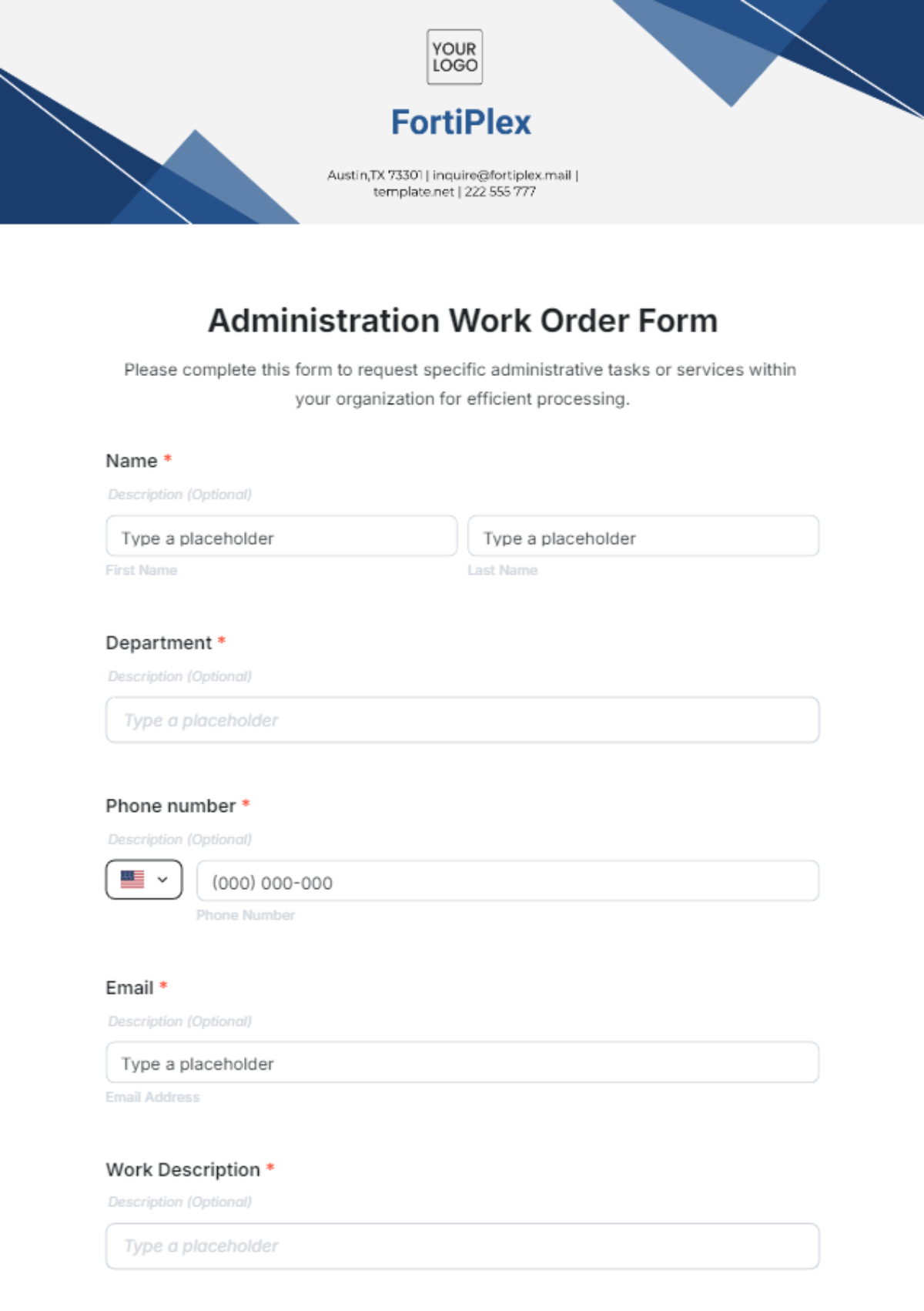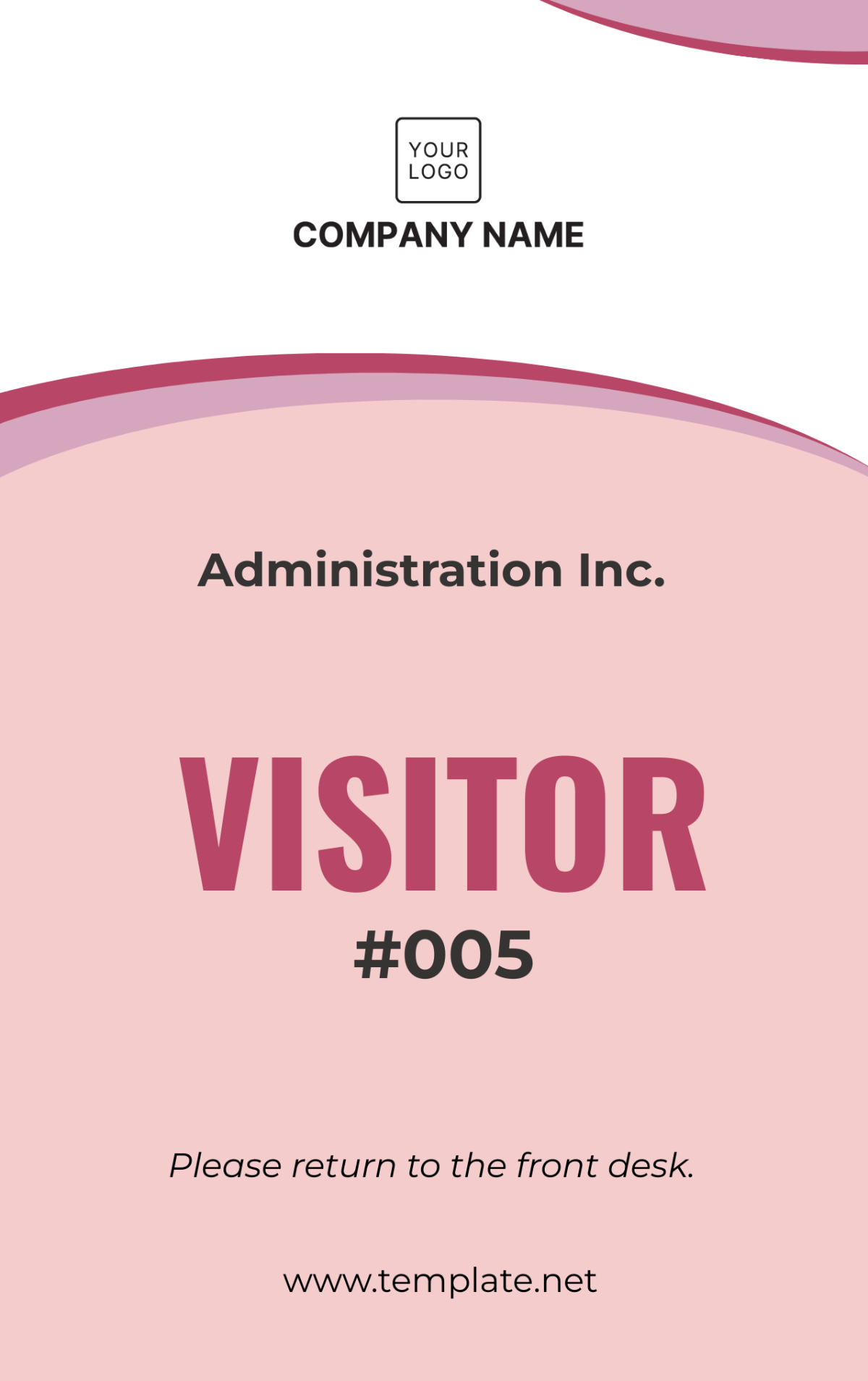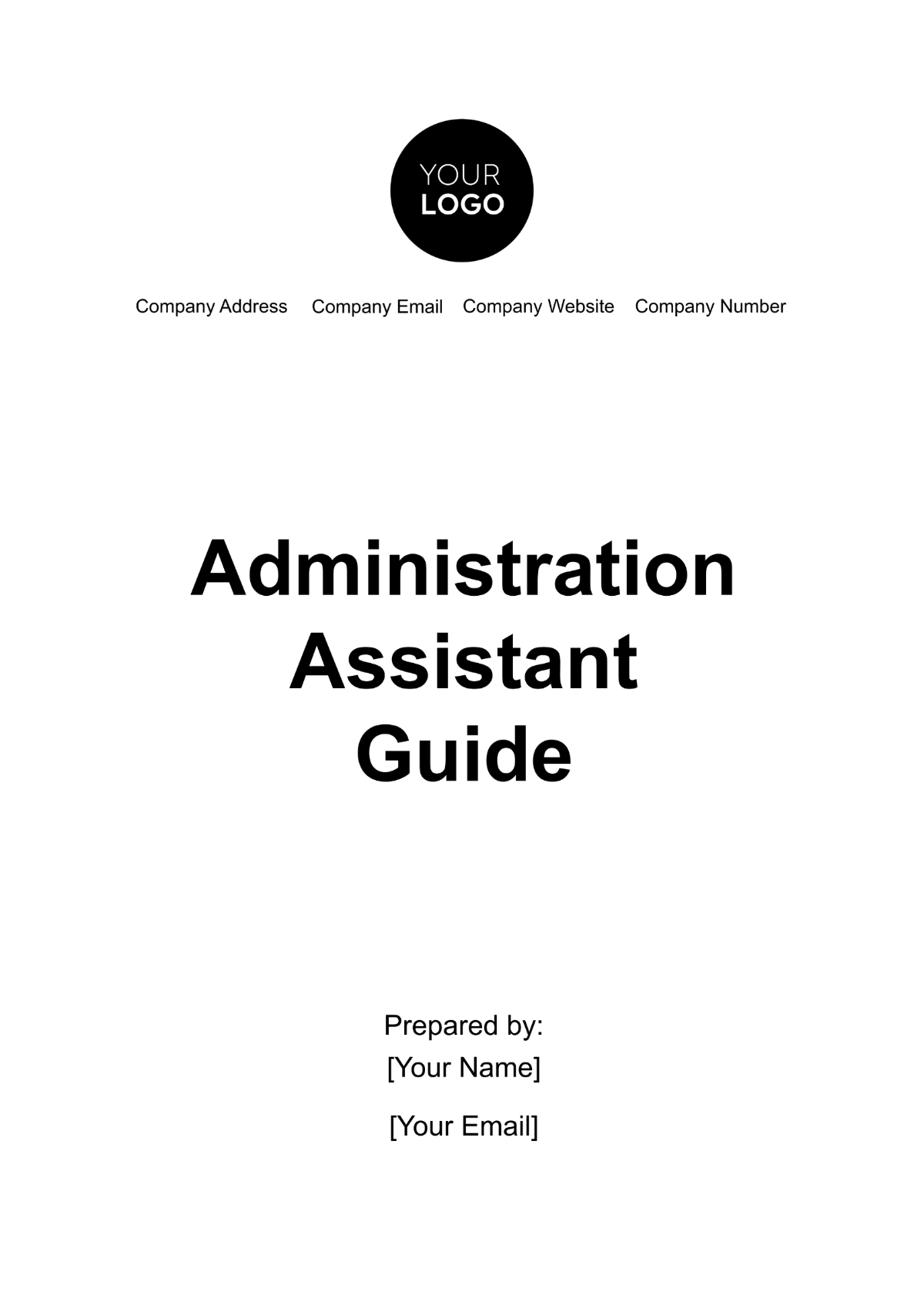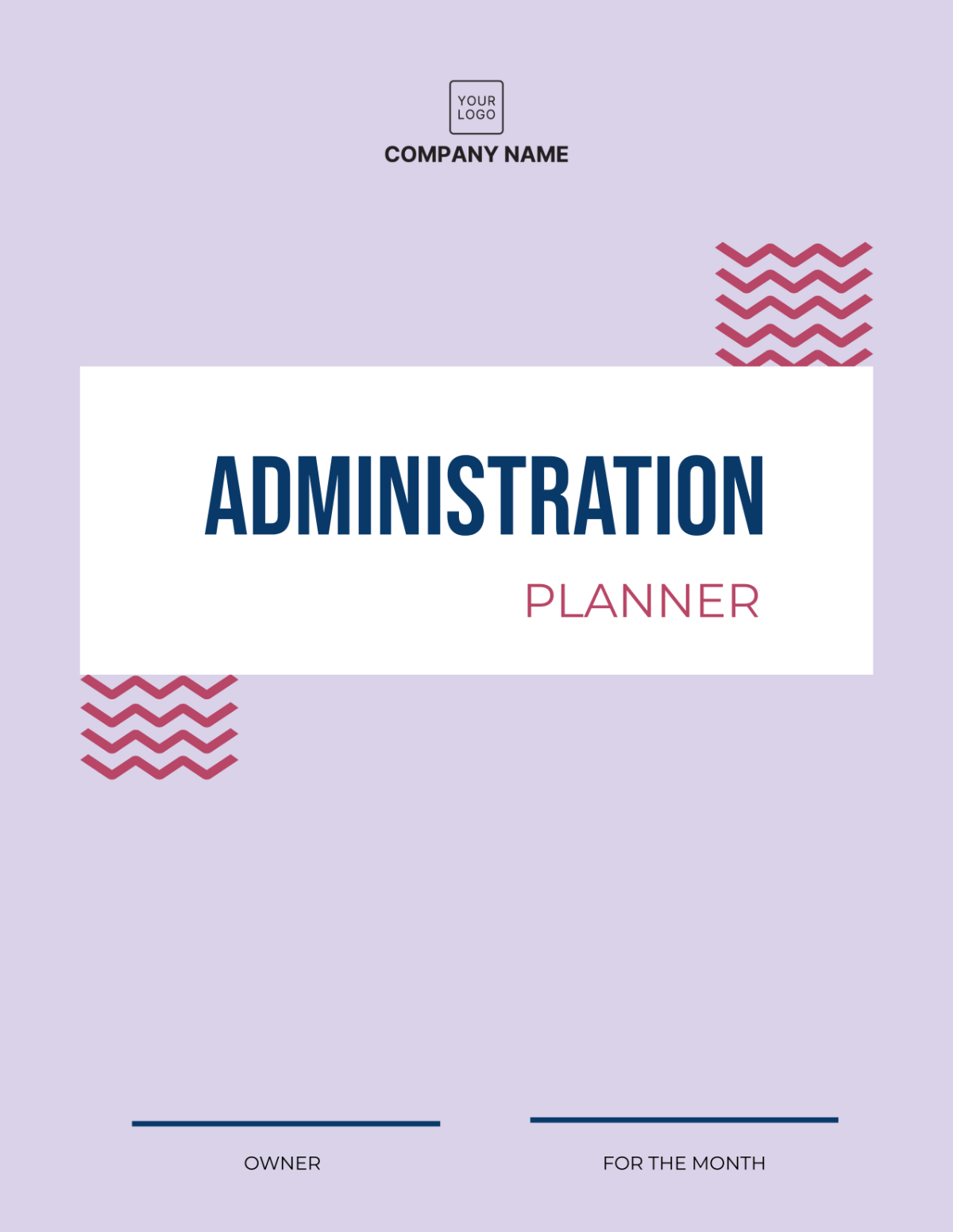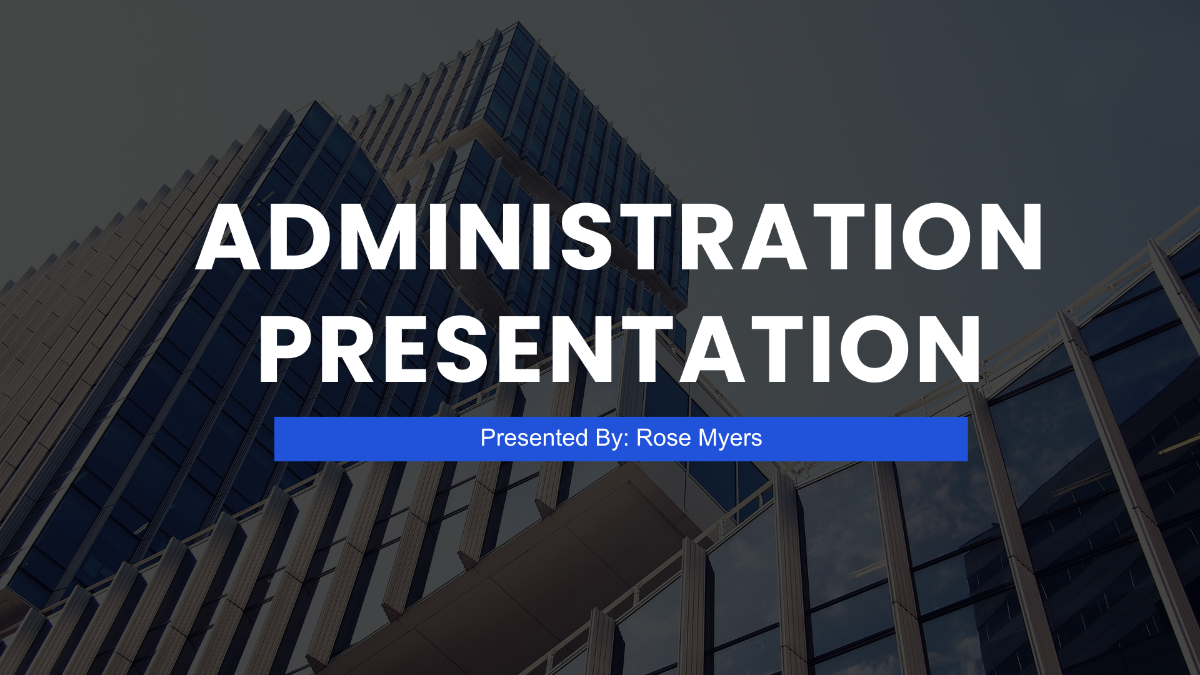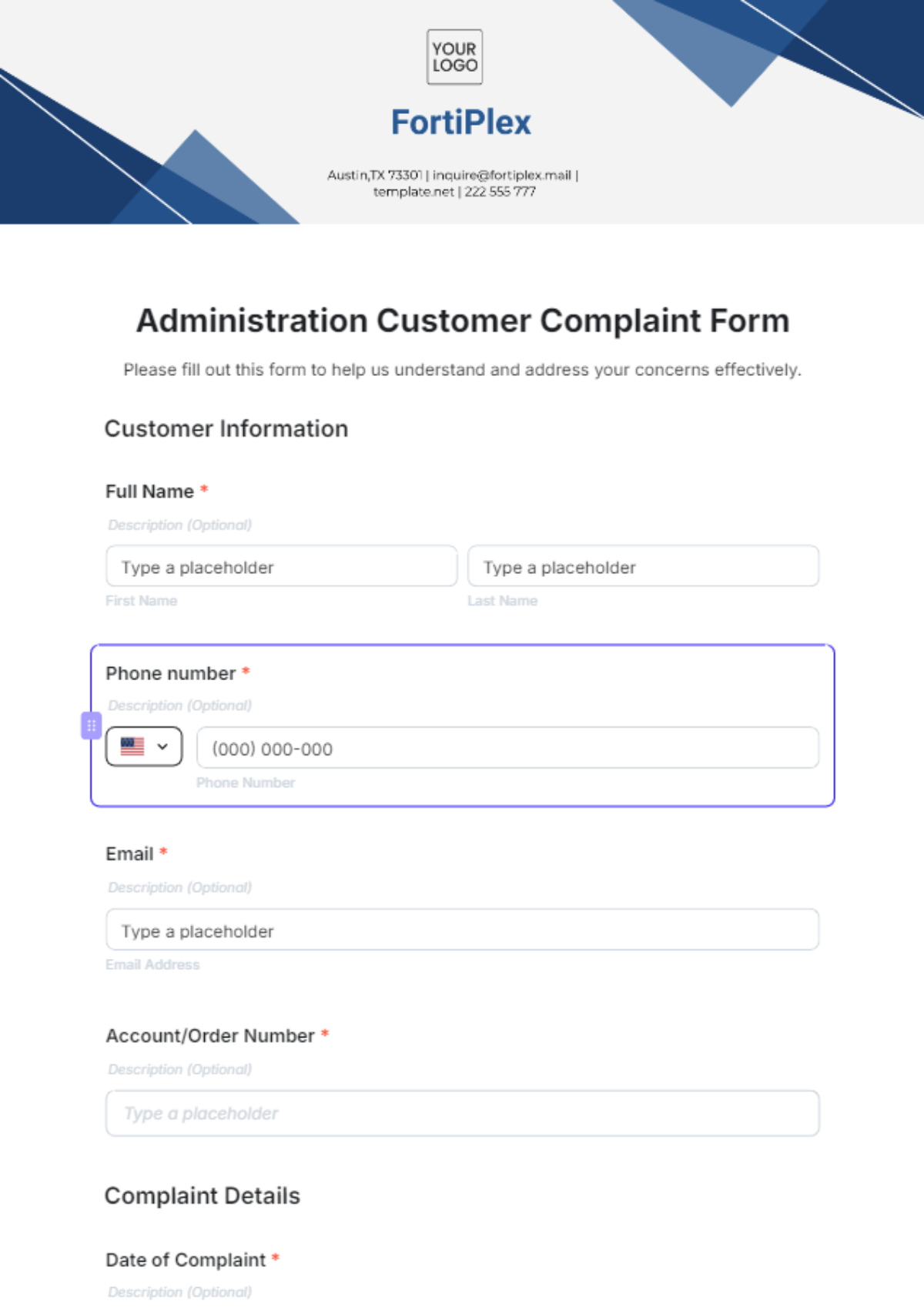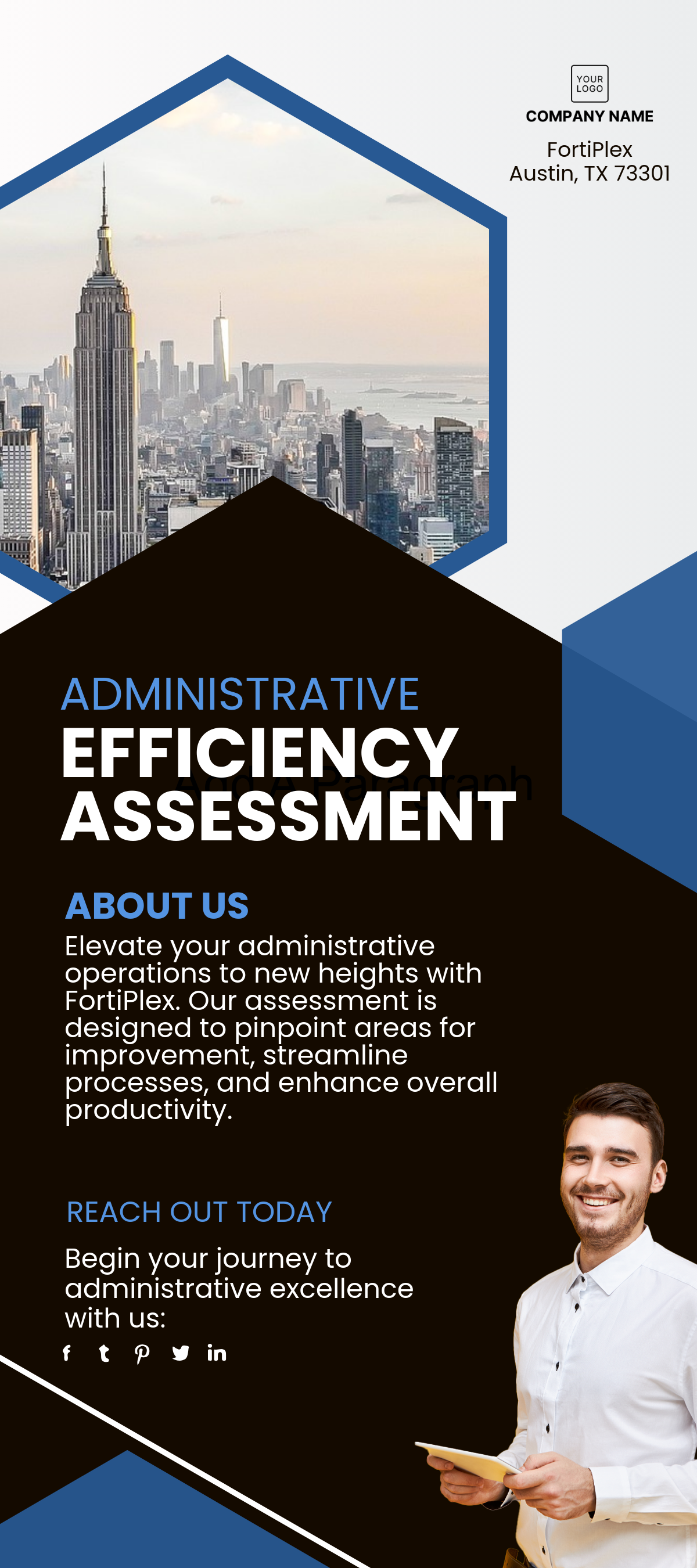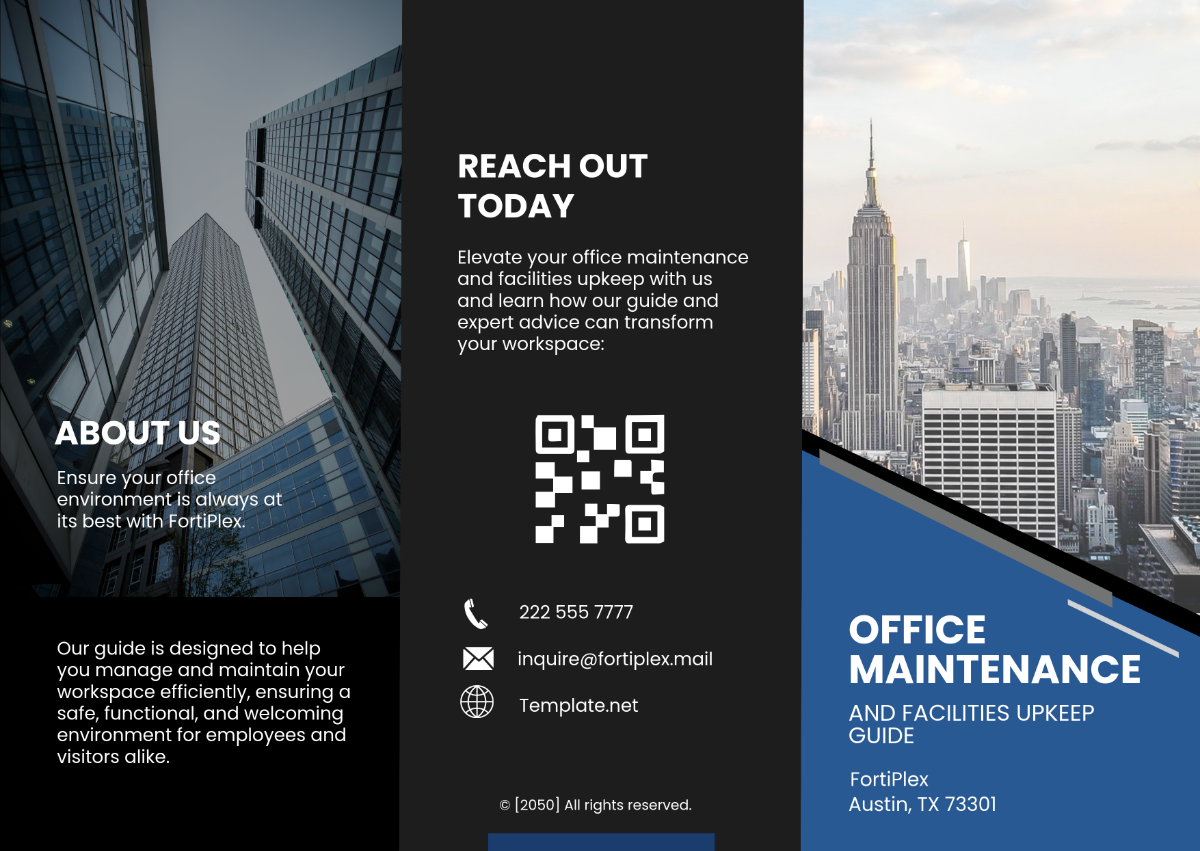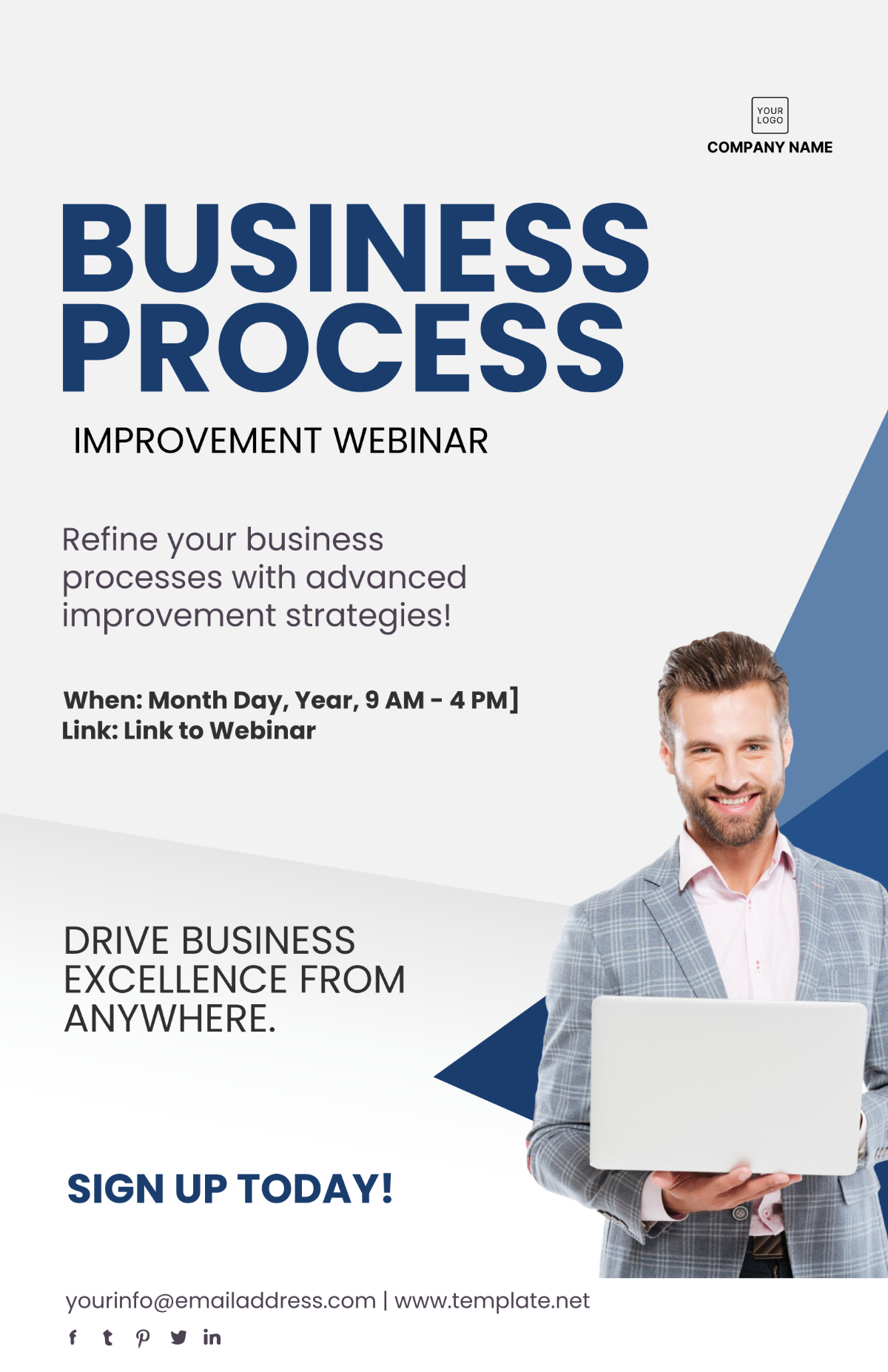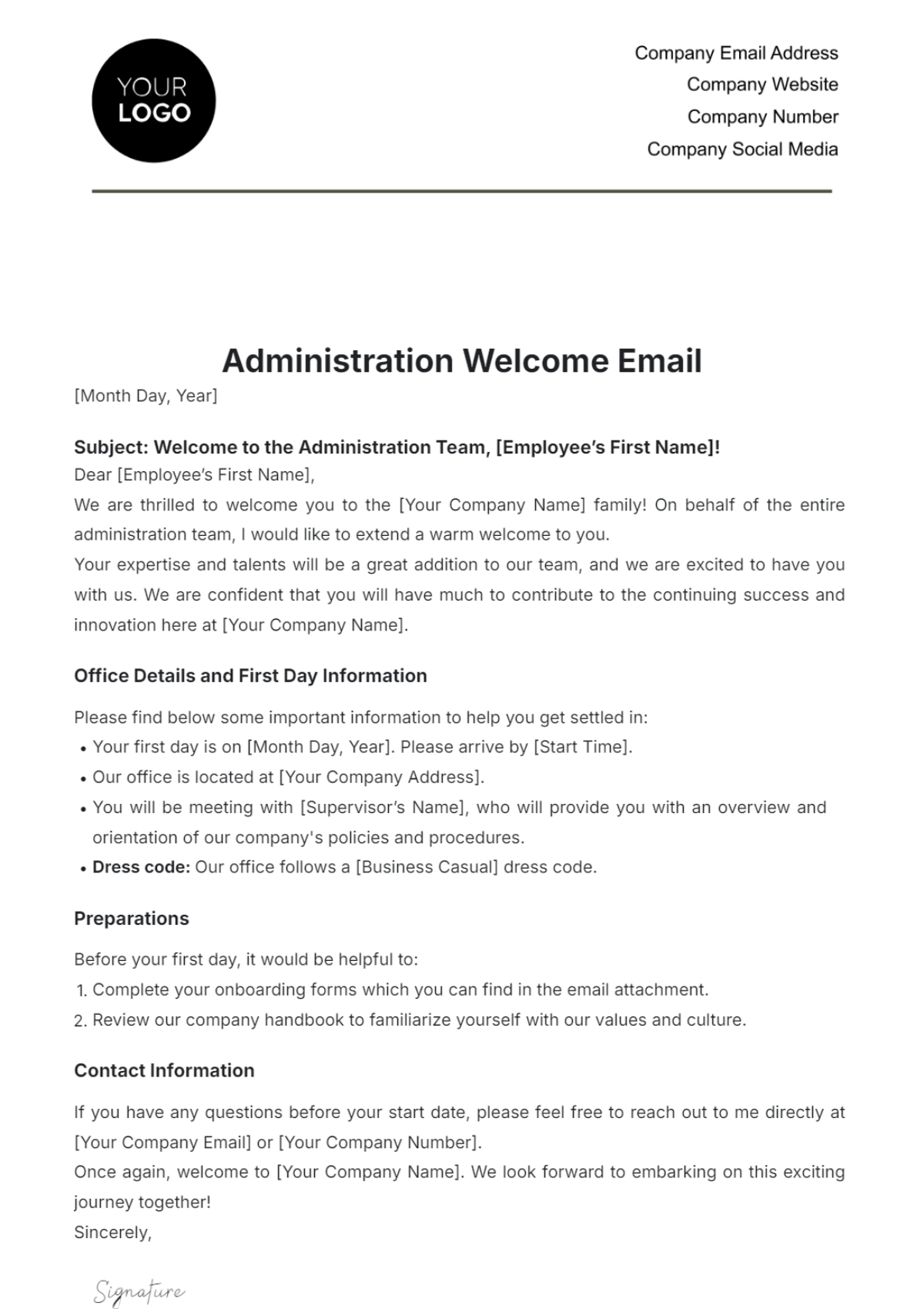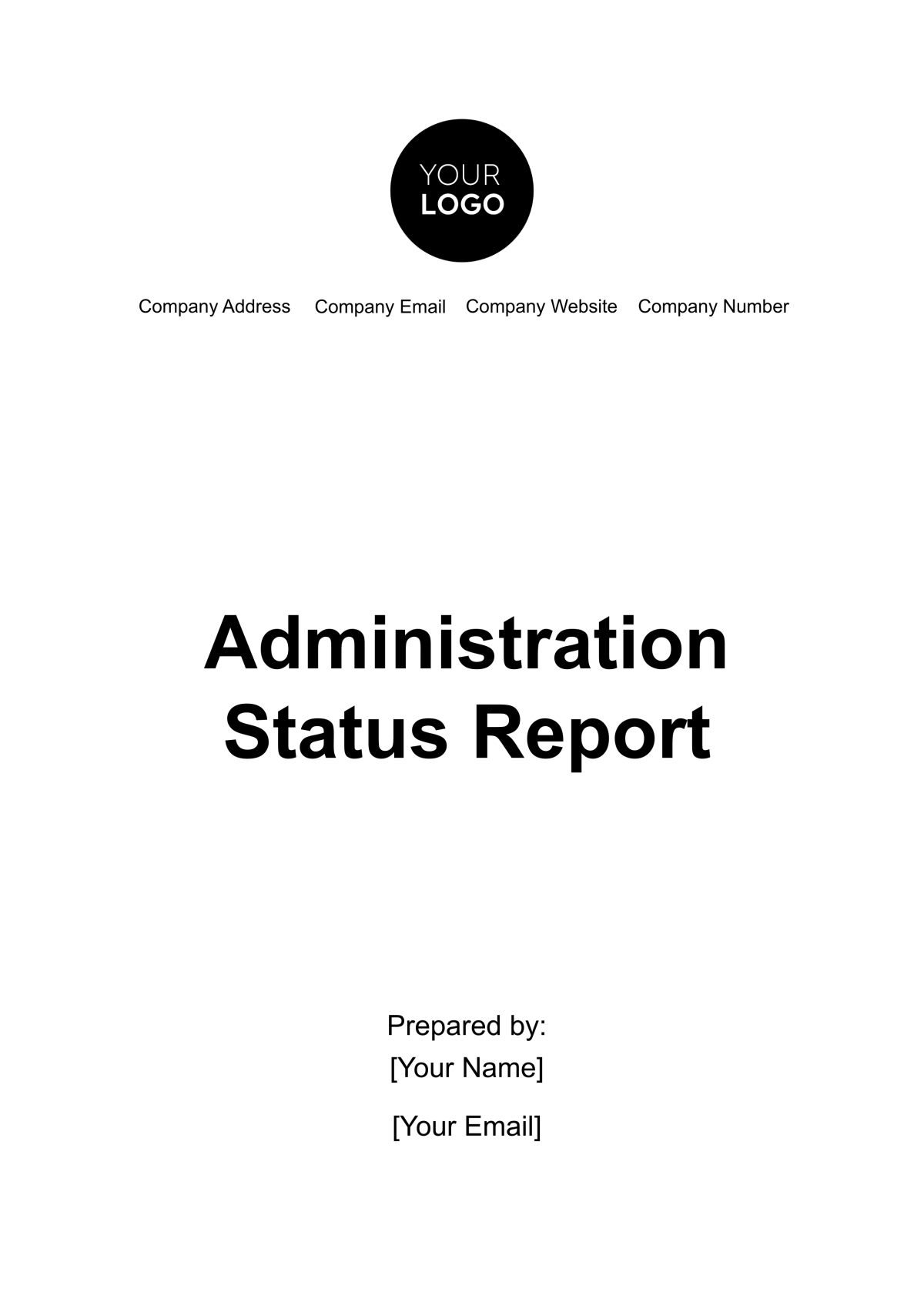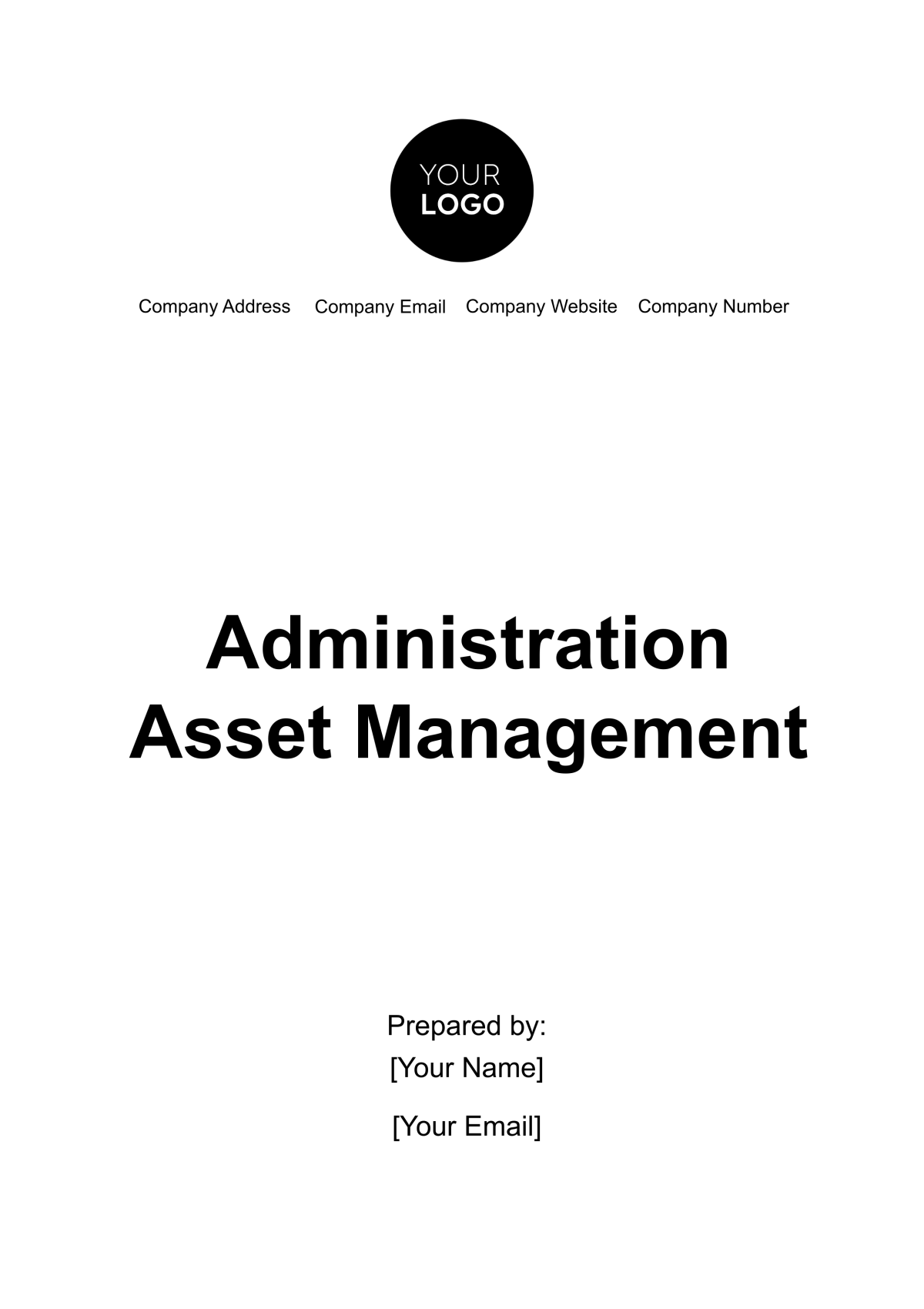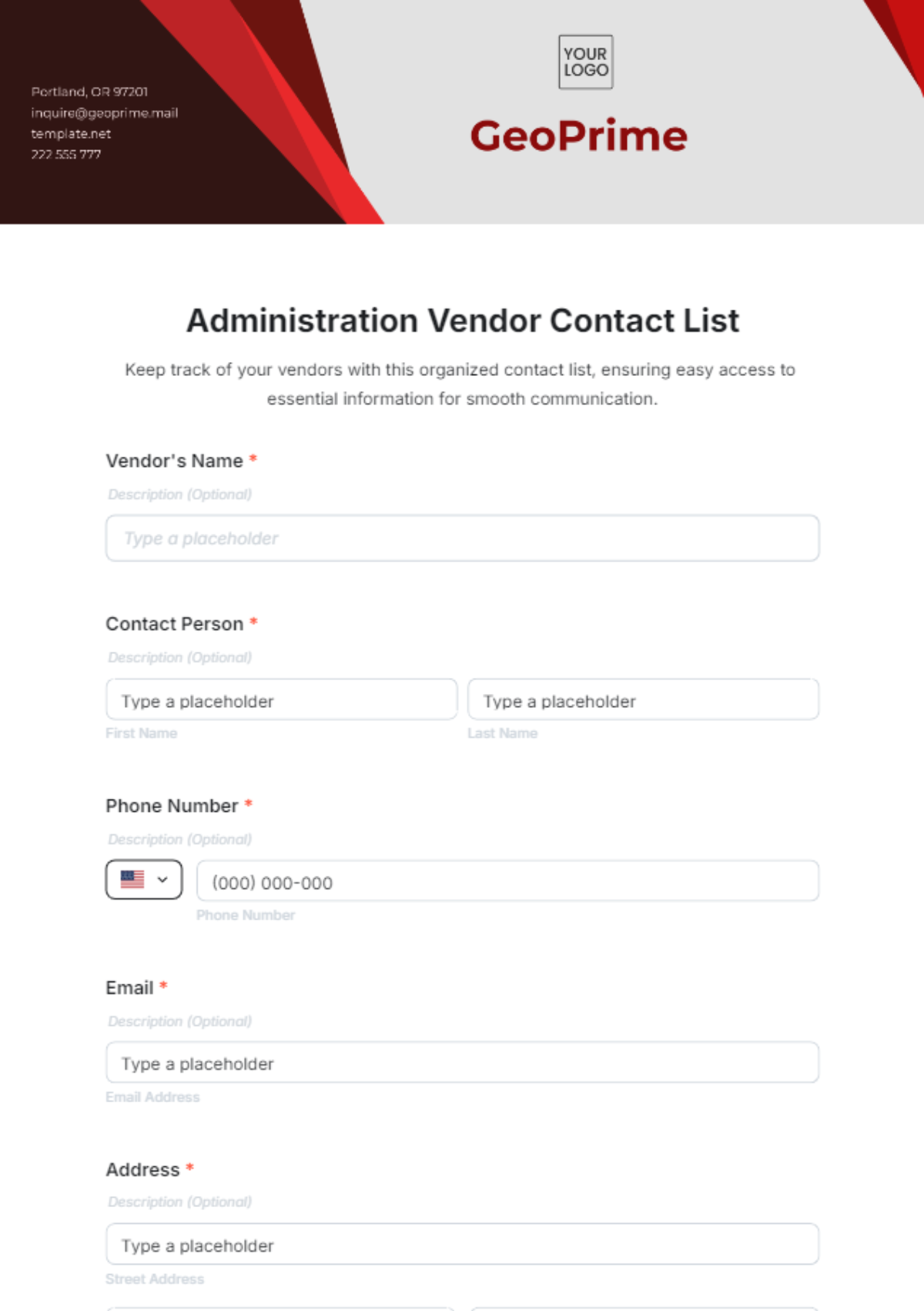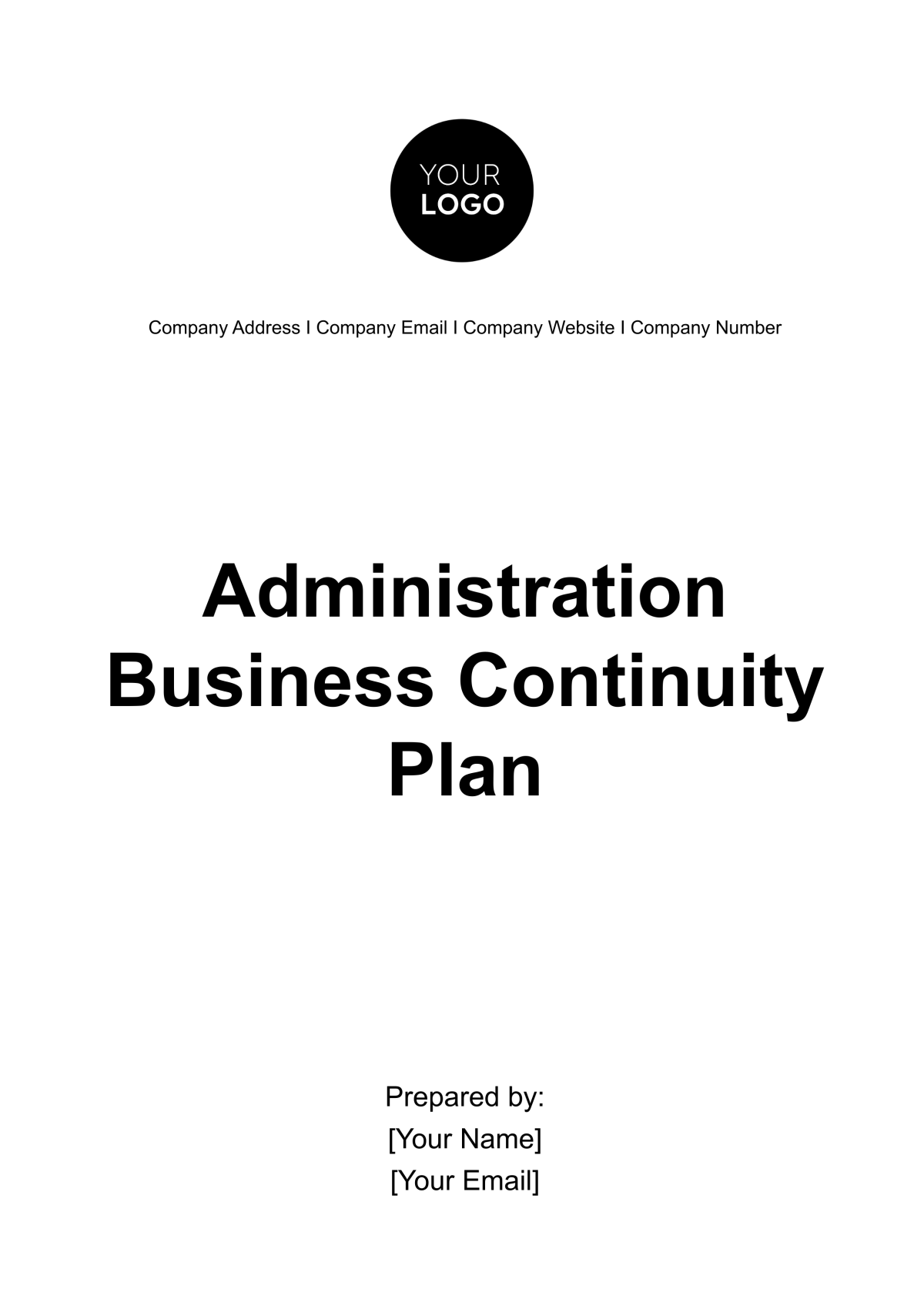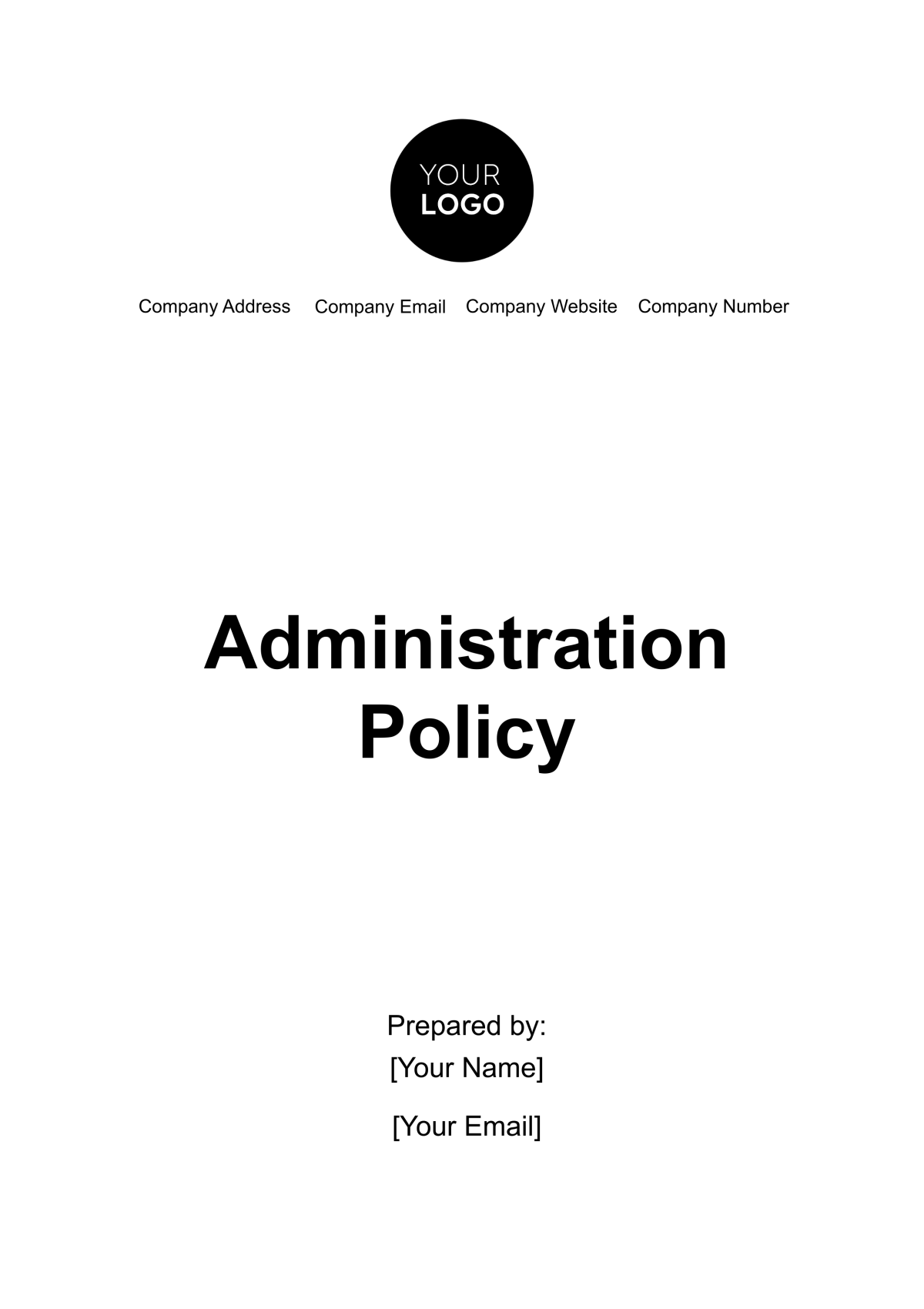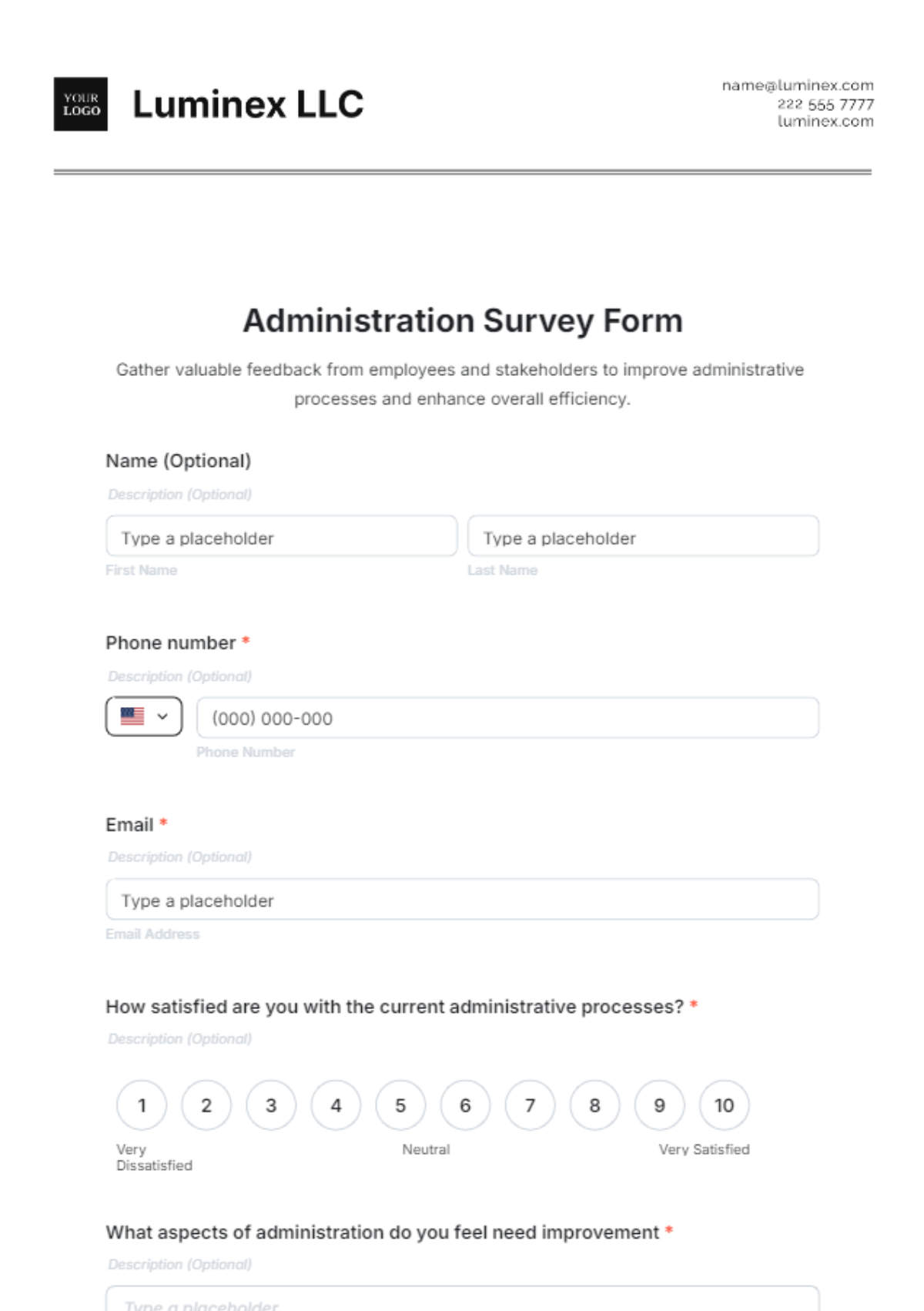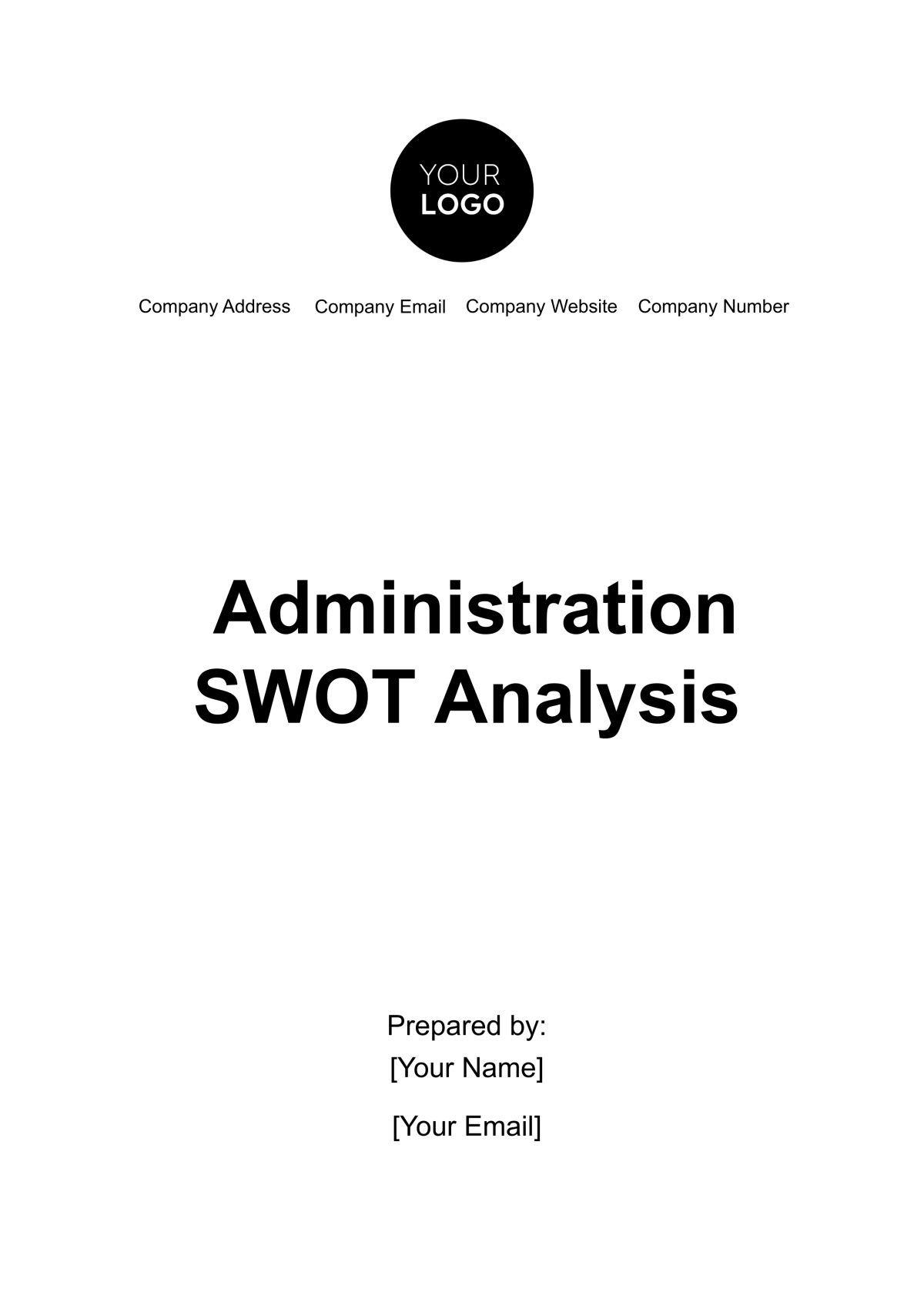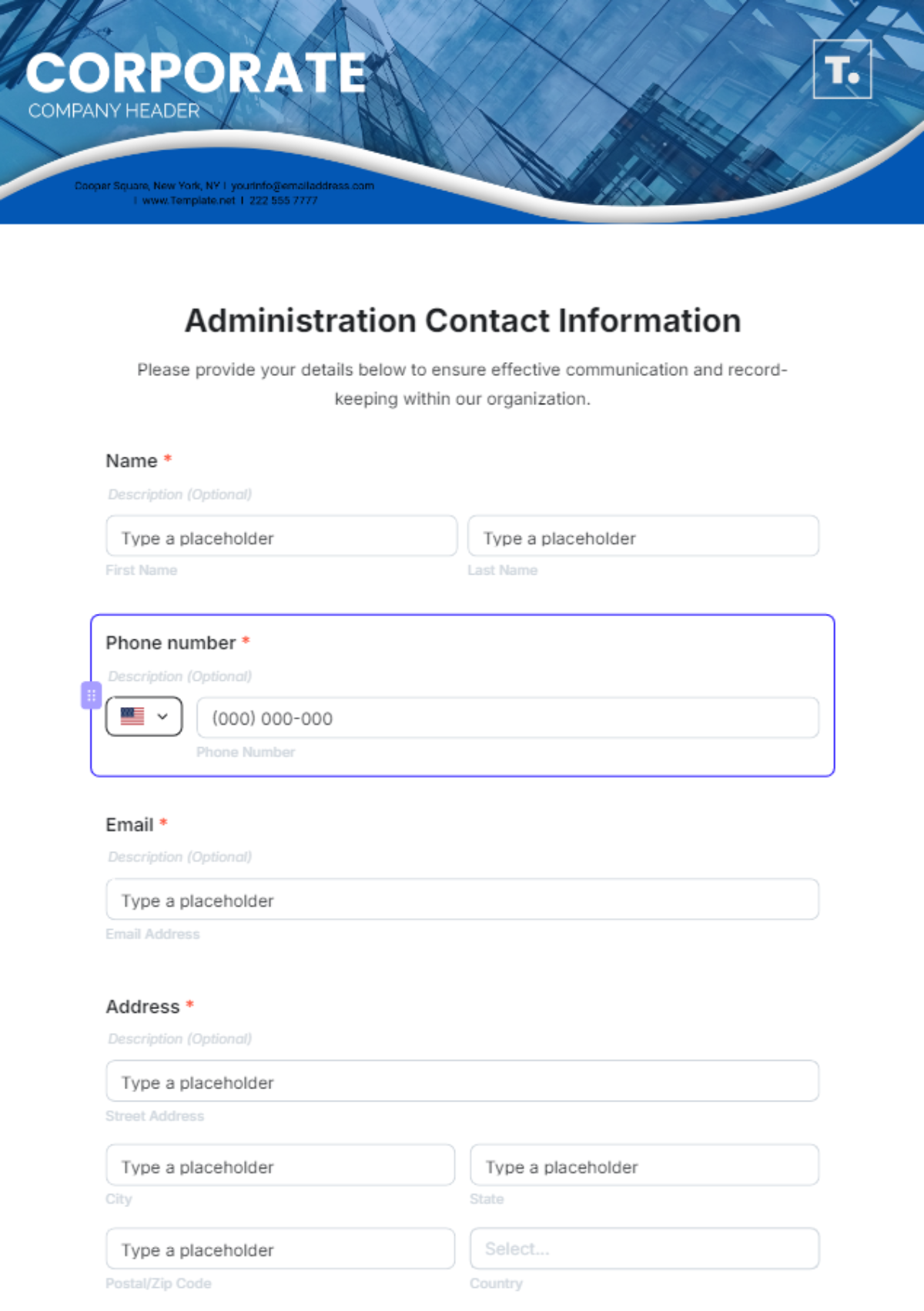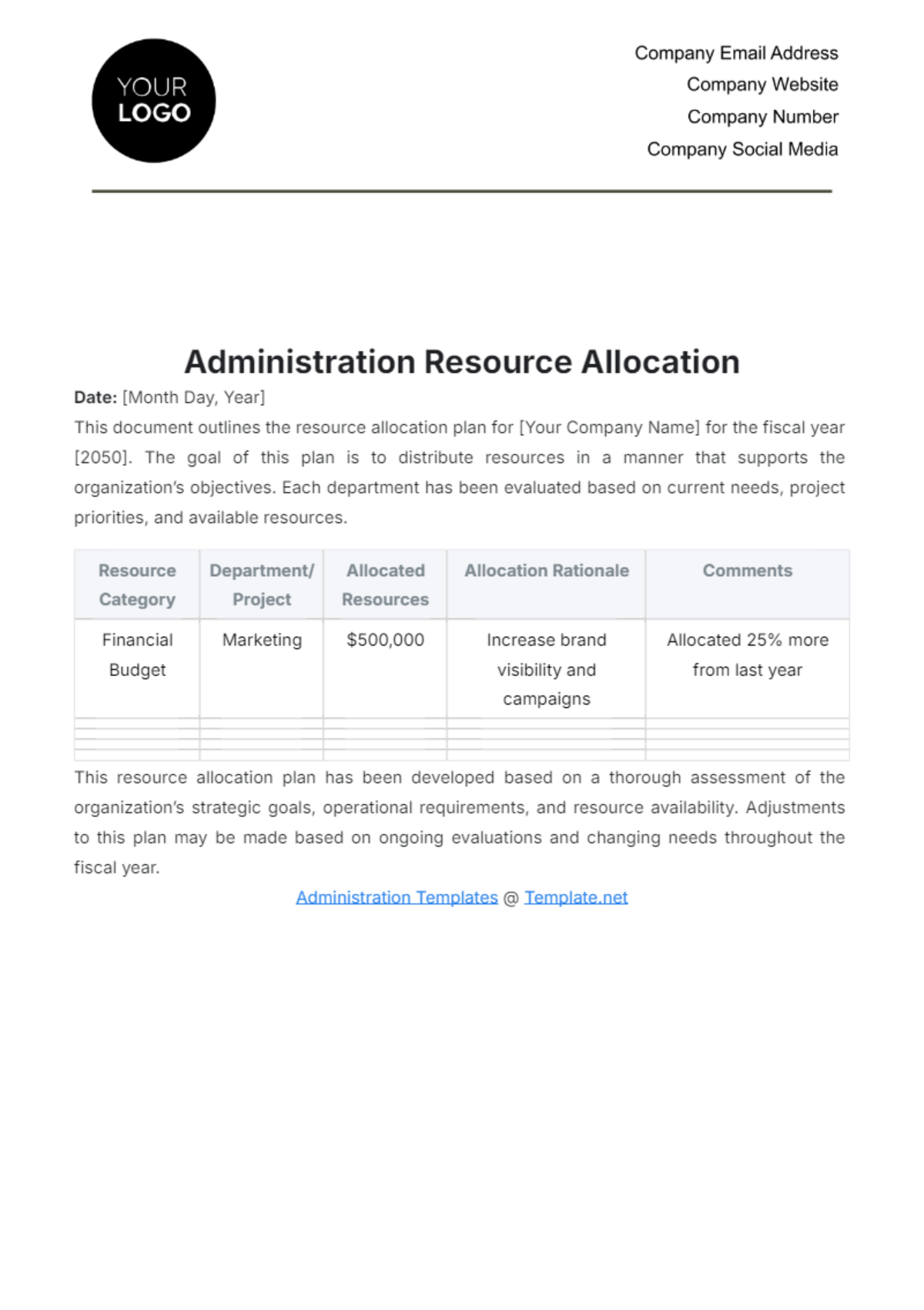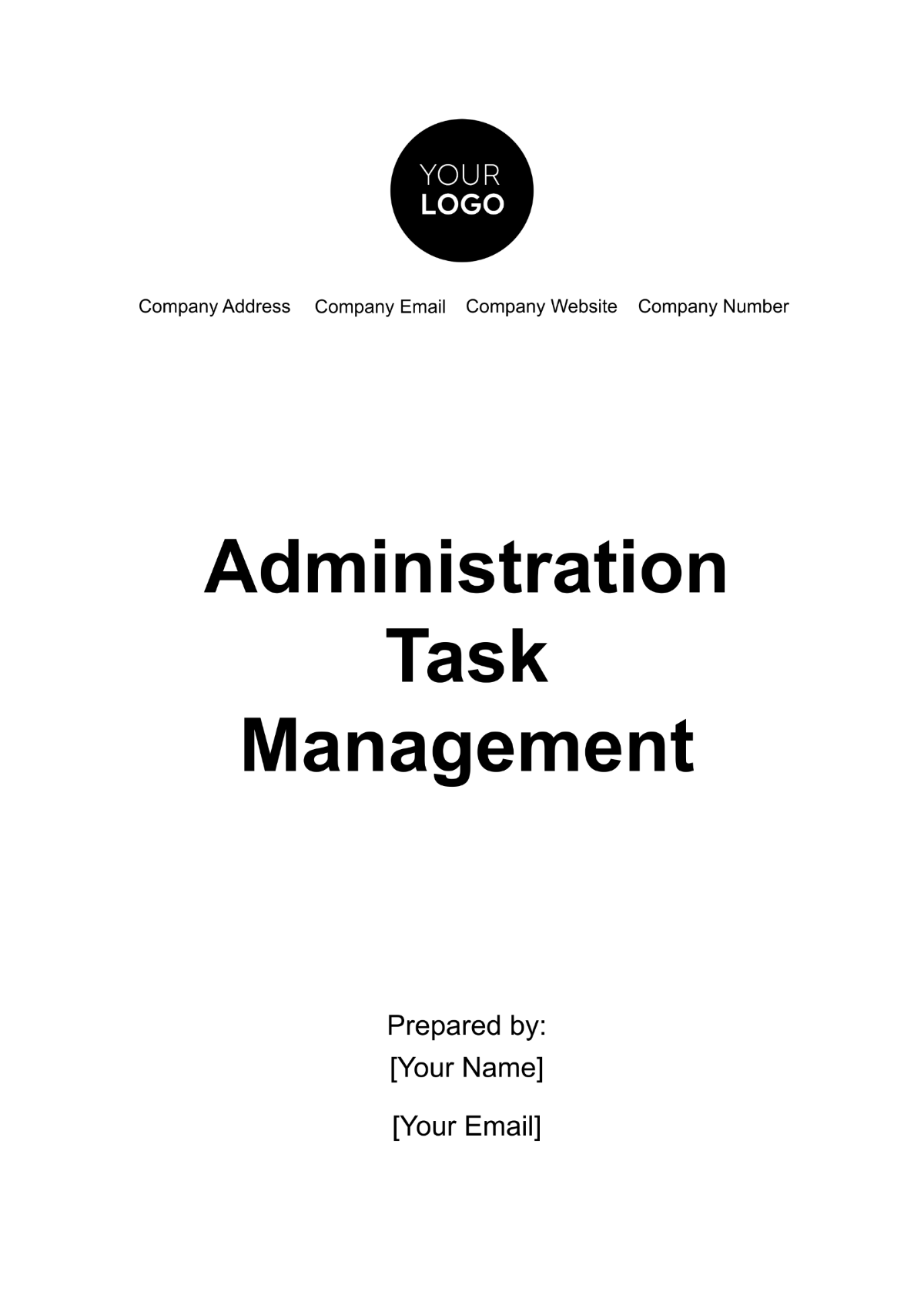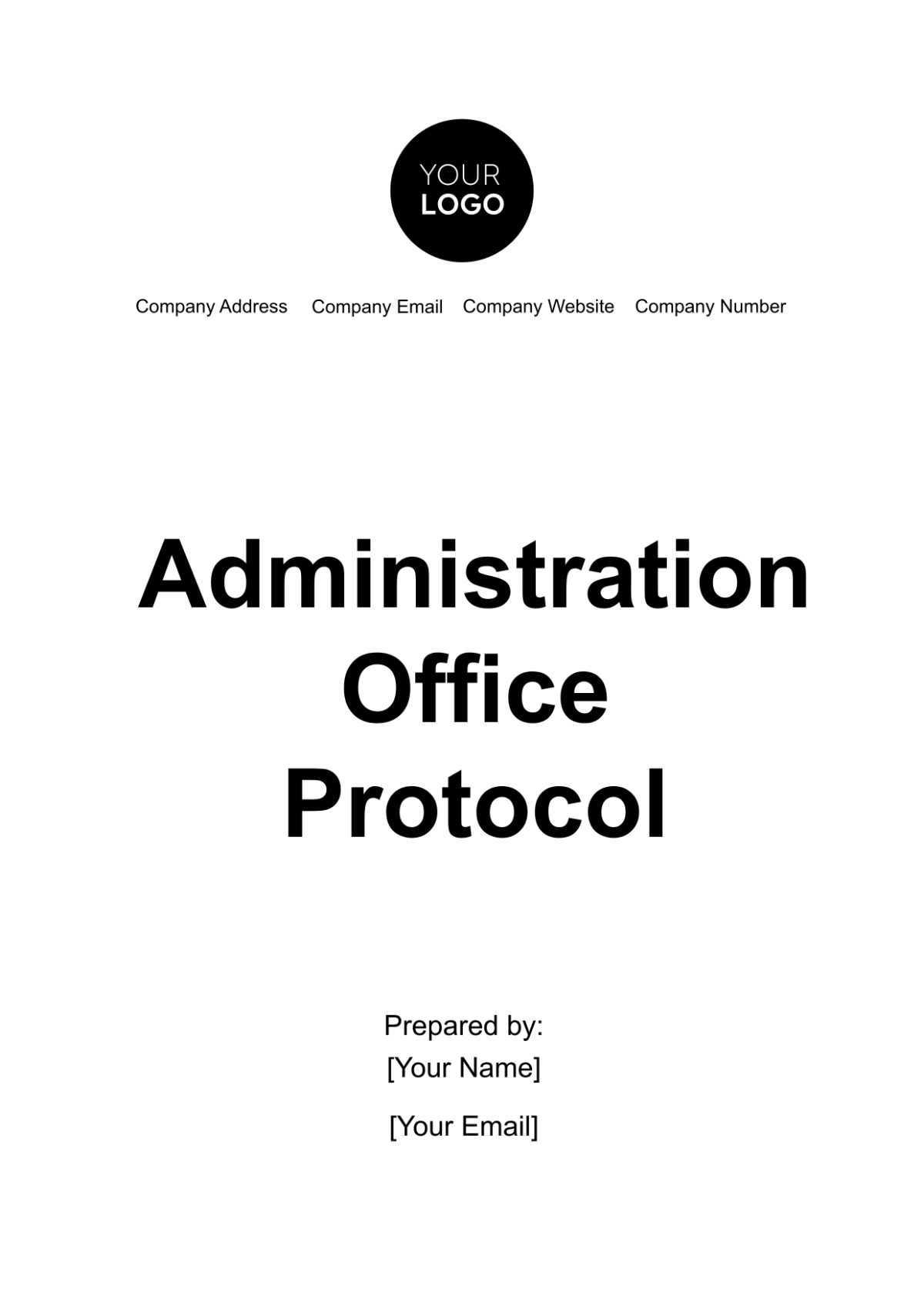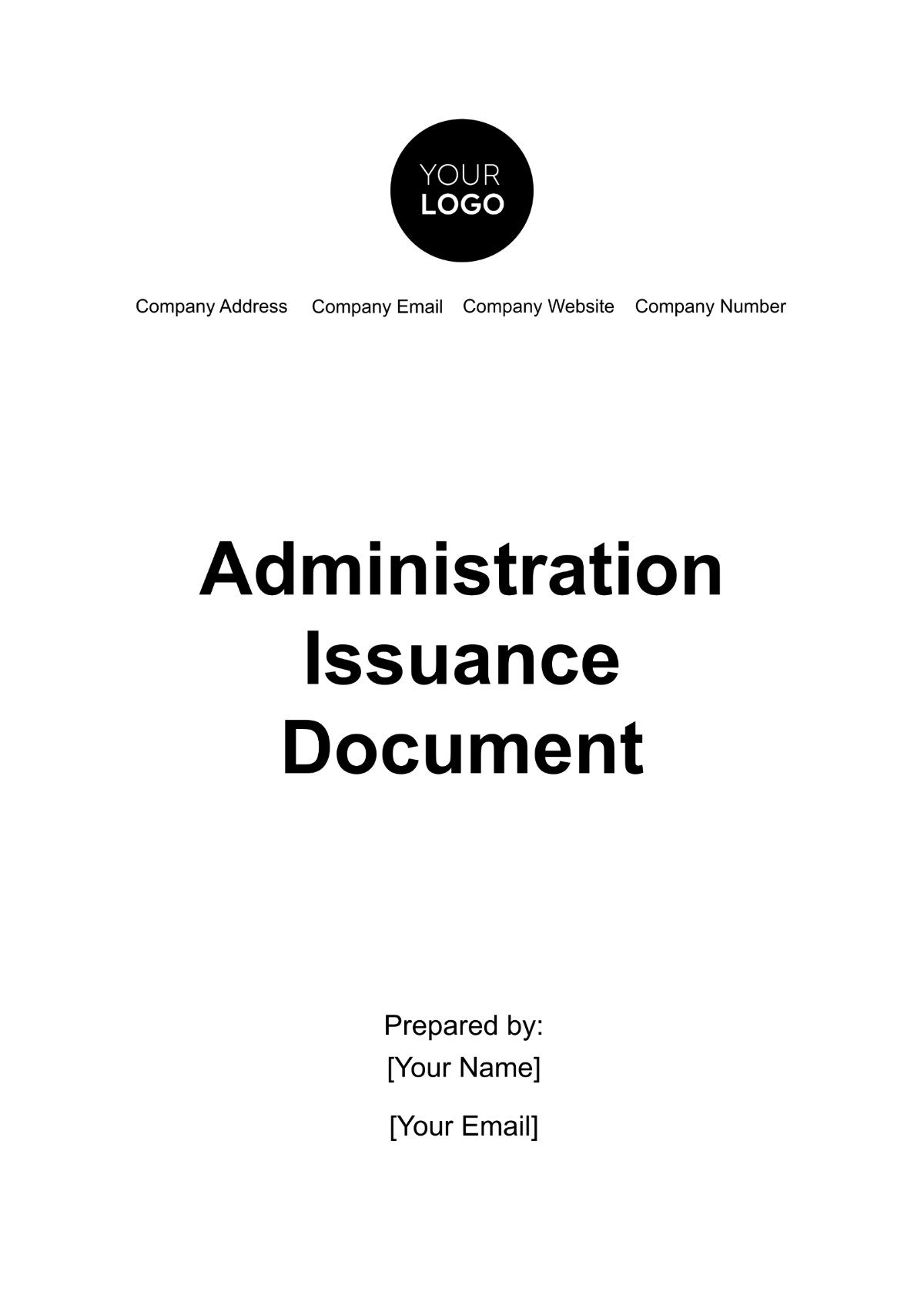Administrative Documentation
I. Introduction
Welcome to the Administrative Documentation for [Your Company Name]. This guide is designed to provide a comprehensive overview of administrative procedures, policies, and best practices essential for ensuring the smooth and efficient operation of our company. As a leading marketing firm, it is crucial that all administrative functions adhere to both company standards and legal requirements. This document will serve as a valuable resource for understanding the various aspects of our administrative framework, including office management, record-keeping, compliance, and employee responsibilities.
The goal of this documentation is to streamline administrative processes, enhance organizational efficiency, and ensure compliance with relevant US laws and regulations. By following these guidelines, employees can contribute to a well-organized and legally compliant workplace, ultimately supporting our company's mission and objectives. This introduction sets the stage for a deeper dive into specific administrative functions and procedures, ensuring that every team member is equipped with the knowledge and tools necessary for their role. We encourage you to review this guide thoroughly and refer to it regularly as part of your routine administrative tasks.
II. Roles and Responsibilities
The following list identifies key administrative roles within the organization along with their primary responsibilities:
Role | Responsibilities |
|---|---|
Administrative Manager | Oversees administrative operations, manages administrative staff, and ensures adherence to company policies. |
Office Administrator | Handles day-to-day office management tasks, including scheduling, correspondence, and maintaining office supplies. |
Human Resources Administrator | Manages employee records, recruitment processes, and employee benefits administration. |
Finance Administrator | Oversees financial transactions, budget management, and financial reporting. |
III. Standard Operating Procedures
Standard Operating Procedures (SOPs) are essential for maintaining consistency and efficiency in operations. The following table lists the primary SOPs for administrative processes:
SOP | Description | Responsible Party |
|---|---|---|
Document Management | Procedures for managing and storing company documents. | Office Administrator |
Employee Onboarding | Steps for integrating new employees into the organization. | Human Resources Administrator |
Expense Reporting | Guidelines for submitting and approving expense reports. | Finance Administrator |
Meeting Coordination | Processes for scheduling and organizing meetings. | Office Administrator |
IV. Communication Protocols
Effective communication is critical for the smooth operation of the organization. The following guidelines should be observed:
All employees are required to check their email at least once every business day.
Official communications should be conducted through the company's email system for record-keeping purposes.
Meetings should be scheduled using the company’s calendar system to avoid conflicts.
V. Record Keeping
Proper record-keeping is a fundamental aspect of ensuring transparency, accountability, and compliance within our organization. Adhering to established record-keeping procedures not only supports operational efficiency but also upholds legal and regulatory standards. The following guidelines outline the essential practices for managing and maintaining records effectively:
Timely Filing and Secure Storage: All records, whether physical or electronic, should be filed promptly after creation or receipt. Timely filing ensures that information is easily accessible when needed and helps prevent unnecessary delays in processing or retrieving documents. Physical records must be stored in a secure and organized manner, using lockable cabinets or storage rooms with restricted access to authorized personnel only. For electronic records, utilize secure servers or cloud storage solutions that are protected by robust security measures, including encryption and multi-factor authentication.
Regular Backup of Electronic Records: To safeguard against data loss, it is imperative to back up electronic records on a regular basis. Establish a consistent backup schedule—preferably daily or weekly—depending on the volume and criticality of the data. Ensure that backups are stored in a separate location from the primary data, such as offsite storage or a secure cloud service, to mitigate risks associated with physical damage or data corruption. Regularly test backup procedures to verify the integrity and recoverability of the data, and maintain clear documentation of backup processes and schedules.
Handling of Confidential Records: Confidential records, including sensitive employee information, financial documents, and proprietary business data, must be handled with the utmost care in accordance with company privacy policies. Access to confidential records should be restricted to authorized individuals only, and appropriate measures must be taken to prevent unauthorized access or disclosure. Confidential records should be securely shredded or otherwise disposed of when no longer needed, following established protocols for document destruction.
By adhering to these record-keeping practices, [Your Company Name] ensures that all records are managed in a manner that promotes transparency, supports accountability, and complies with relevant legal and regulatory requirements. Proper record-keeping not only protects the company’s interests but also builds trust with clients, stakeholders, and regulatory bodies.
VI. Compliance and Audits
Ensuring compliance with both internal policies and external regulations is crucial for maintaining the integrity and operational efficiency of [Your Company Name]. Regular audits are an essential component of our compliance strategy, designed to identify potential issues, verify adherence to established standards, and drive continuous improvement. The following steps outline our structured audit process:
Pre-Audit Preparation: Effective audits begin with thorough preparation. Prior to an audit, it is essential to gather all relevant documents, records, and data that pertain to the areas under review. This includes financial statements, operational procedures, compliance records, and any other pertinent information. Preparation also involves notifying relevant departments and personnel about the upcoming audit to ensure that they are ready to provide necessary documentation and answer any questions that auditors may have. Conducting a pre-audit checklist helps identify potential areas of concern and ensures that all required materials are organized and accessible.
Audit Execution: The audit itself involves a detailed and systematic examination of our compliance with internal policies and external regulations. Auditors will review documents, assess operational procedures, and evaluate the effectiveness of our compliance measures. This process includes checking adherence to legal requirements, verifying accuracy and completeness of records, and assessing the overall effectiveness of controls and processes. The audit team may use various methodologies, including interviews, sampling, and data analysis, to gather evidence and form their conclusions. The objective is to ensure that our practices meet or exceed industry standards and regulatory requirements.
Post-Audit Review: Following the audit, a comprehensive review of the findings will be conducted. This includes addressing any issues or discrepancies identified during the audit and implementing corrective actions as necessary. The post-audit review involves developing and executing an action plan to rectify deficiencies, improve processes, and prevent recurrence of similar issues in the future. It also includes communicating the results of the audit to relevant stakeholders and ensuring that any required changes are integrated into our standard operating procedures. Regular follow-up reviews will be scheduled to monitor the effectiveness of corrective actions and ensure sustained compliance.
VII. Conclusion
To uphold the integrity and operational excellence of [Your Company Name], we conduct regular audits to ensure compliance with both internal policies and external regulations. The audit process begins with meticulous pre-audit preparation. This involves gathering all relevant documents and records, such as financial statements, compliance logs, and operational procedures. It is essential to notify relevant departments and personnel in advance, allowing them to prepare necessary documentation and facilitate a smooth audit process. This preparation helps identify potential issues early and ensures that all required materials are organized and readily accessible.
During the audit, a thorough review of compliance and operational procedures is carried out. Auditors examine documents, assess the effectiveness of controls, and verify adherence to legal and regulatory requirements. The audit may involve various methodologies, including interviews, data analysis, and sampling, to ensure a comprehensive evaluation. Post-audit, any issues identified are addressed through a detailed review, and corrective actions are implemented. This includes developing an action plan to resolve deficiencies and prevent future occurrences. Communicating the results and integrating necessary changes into standard operating procedures are crucial steps to maintain ongoing compliance and operational efficiency. Through this rigorous audit process, [Your Company Name] reinforces its commitment to regulatory compliance and continuous improvement.

